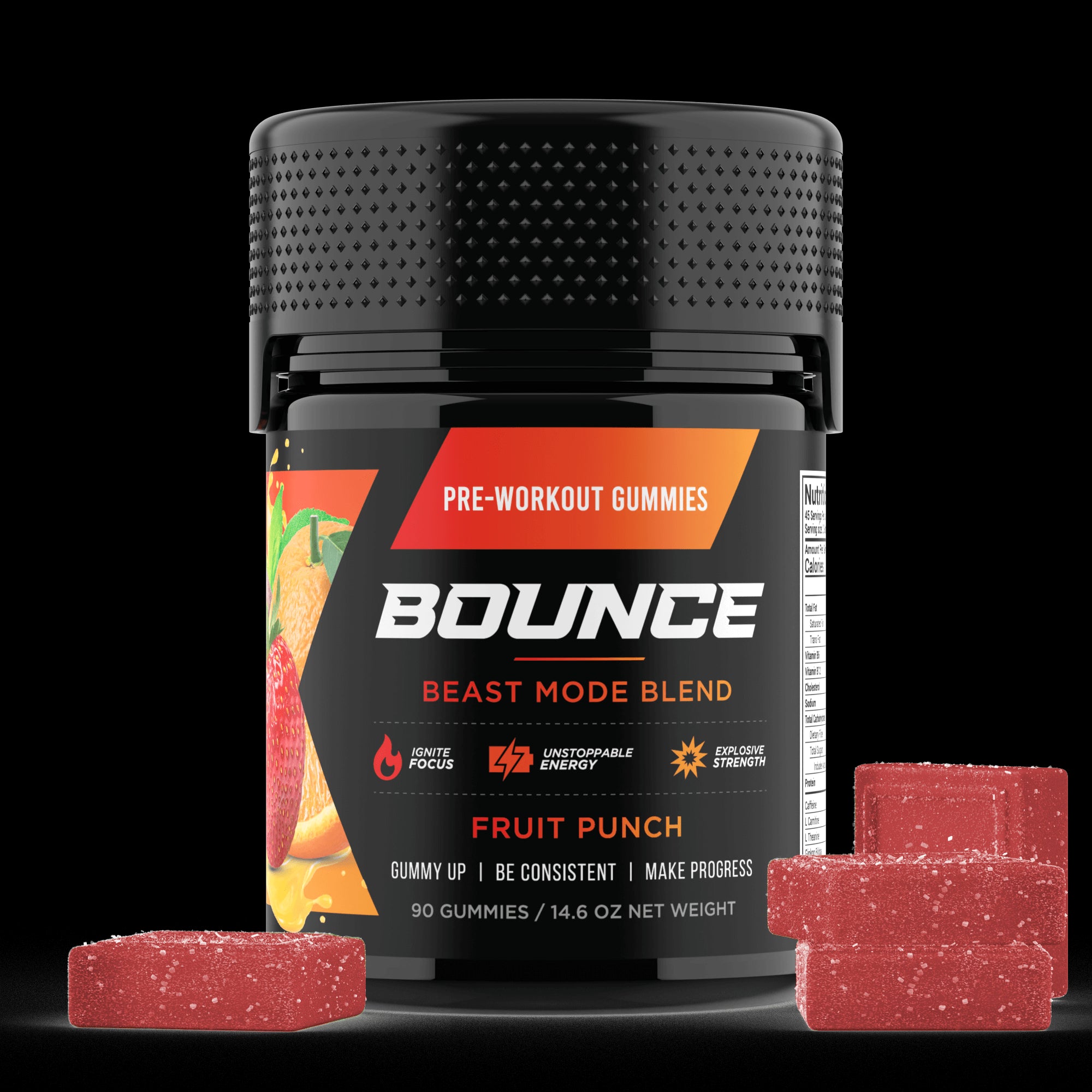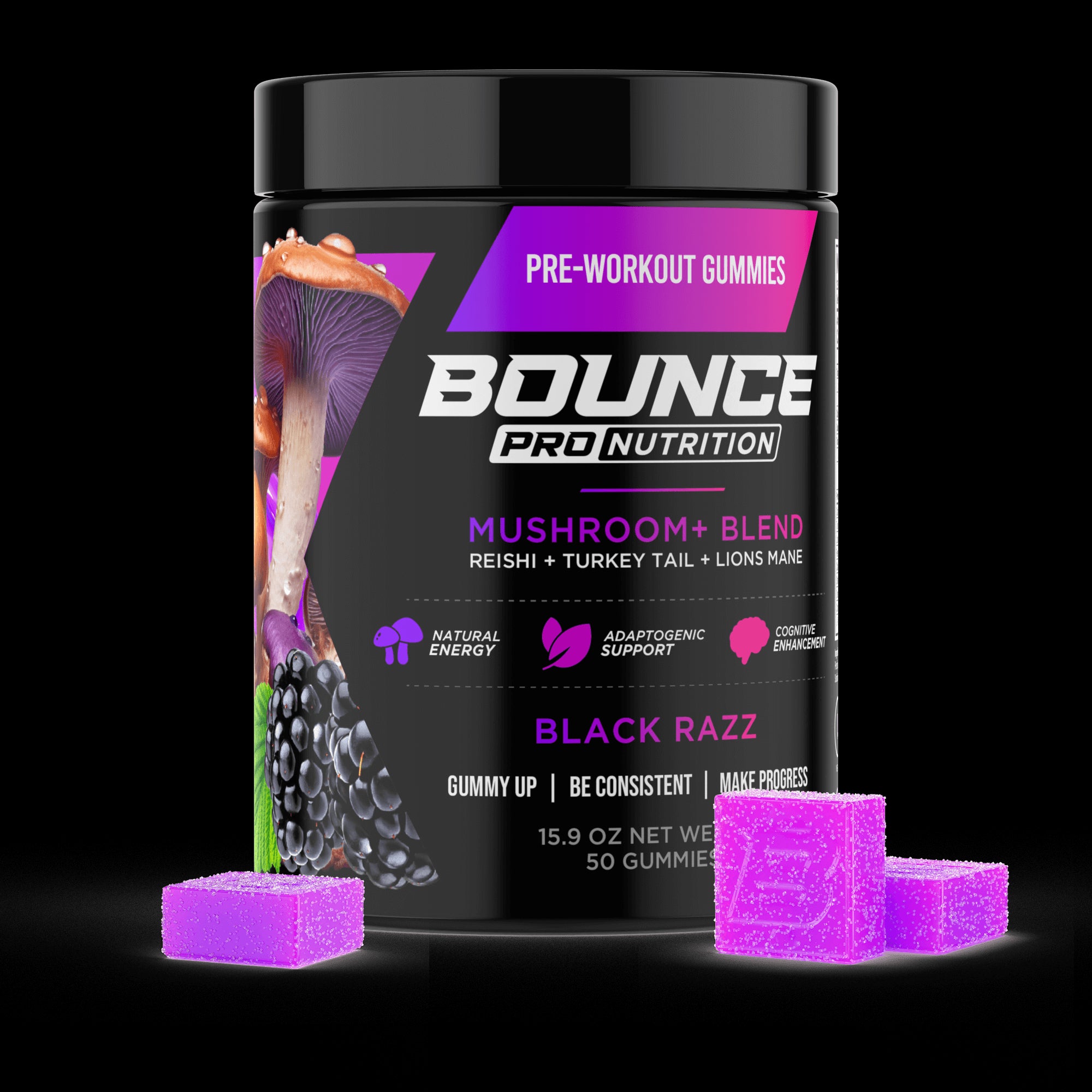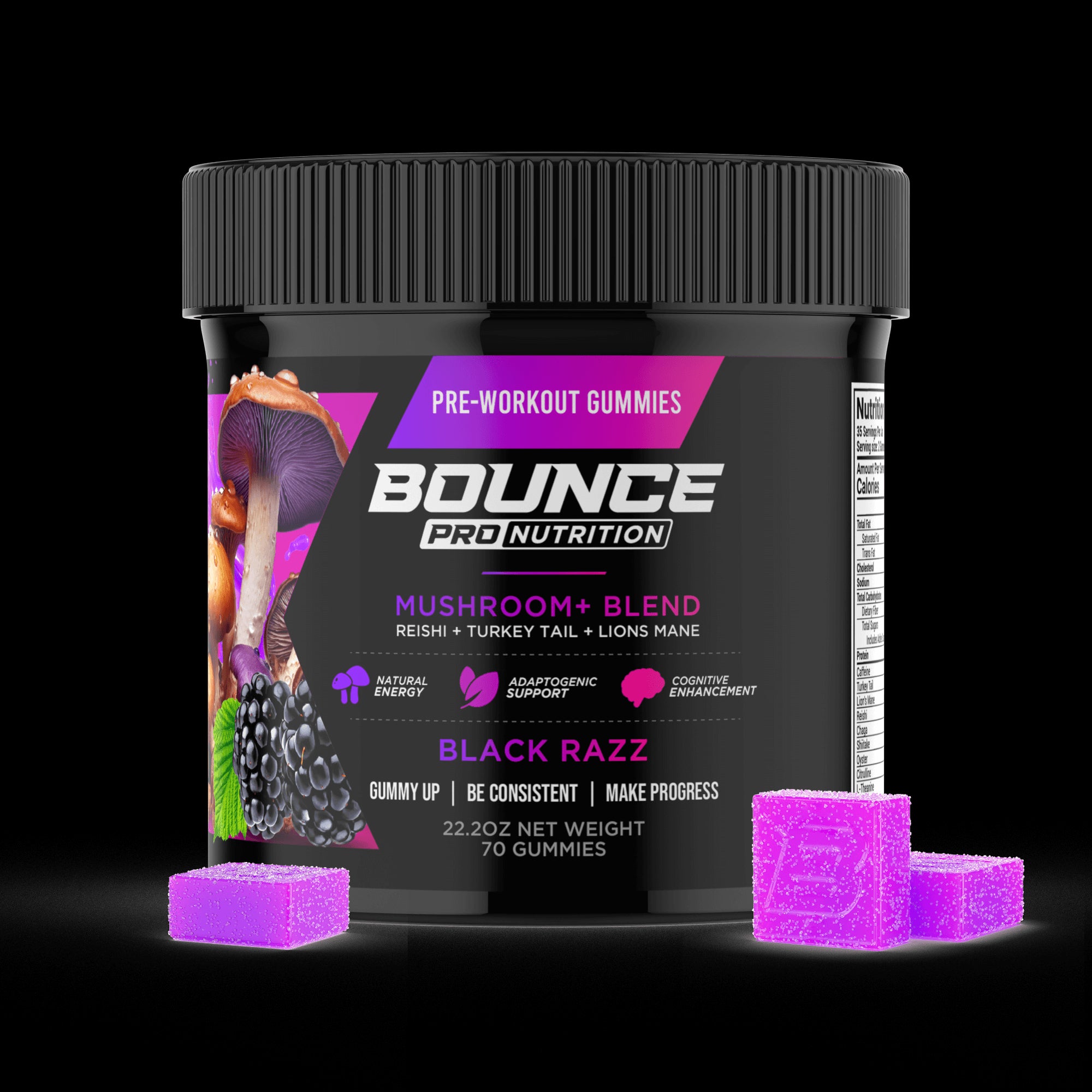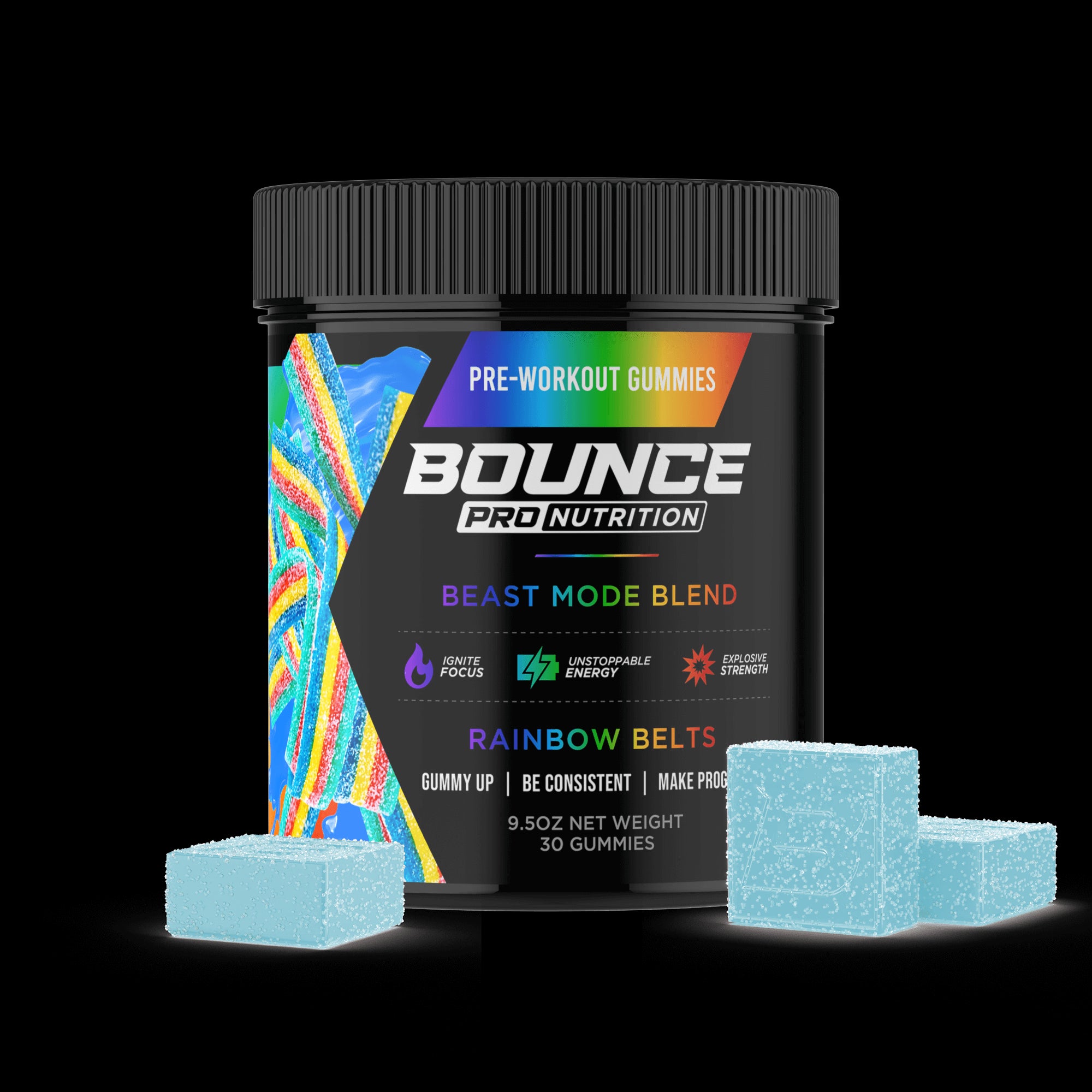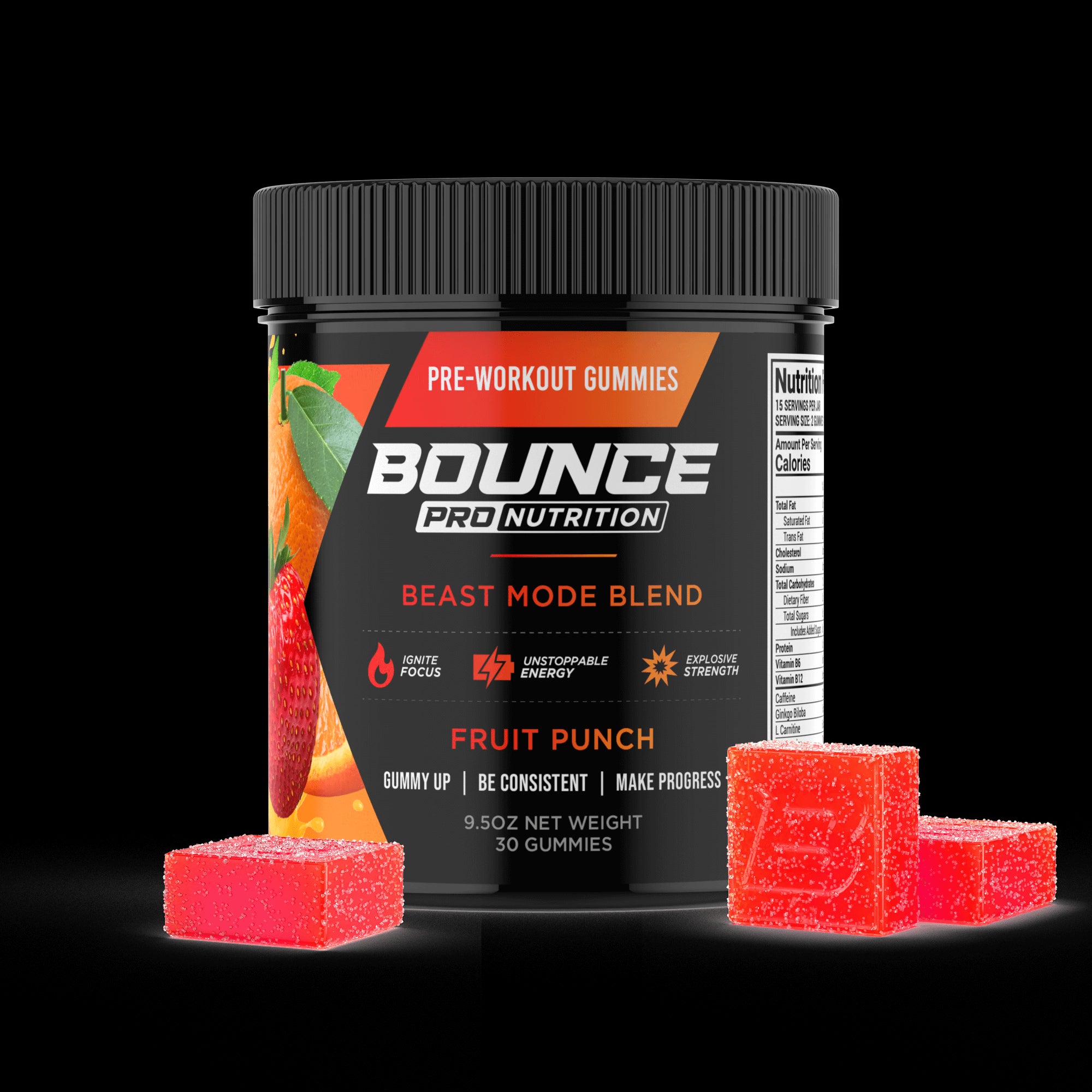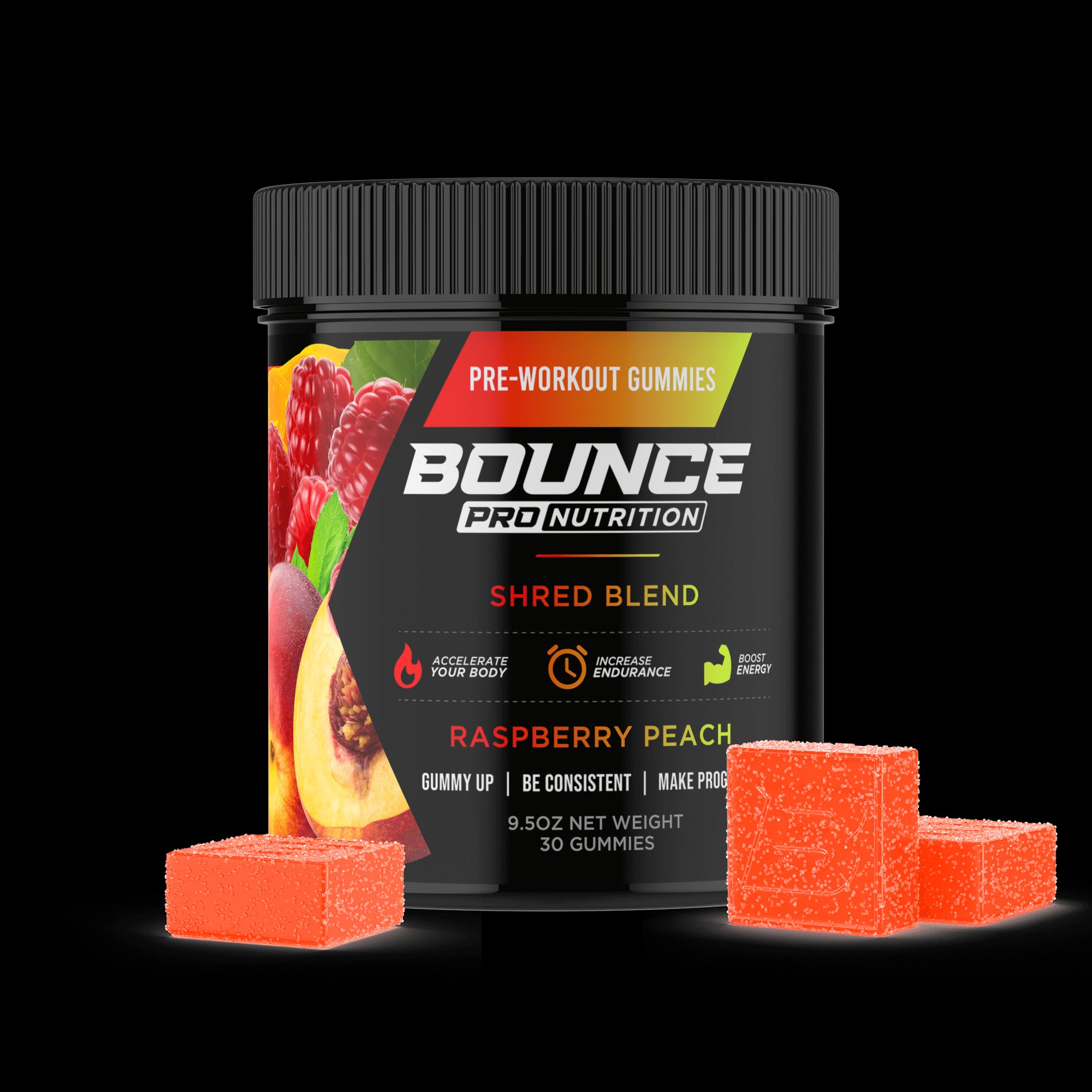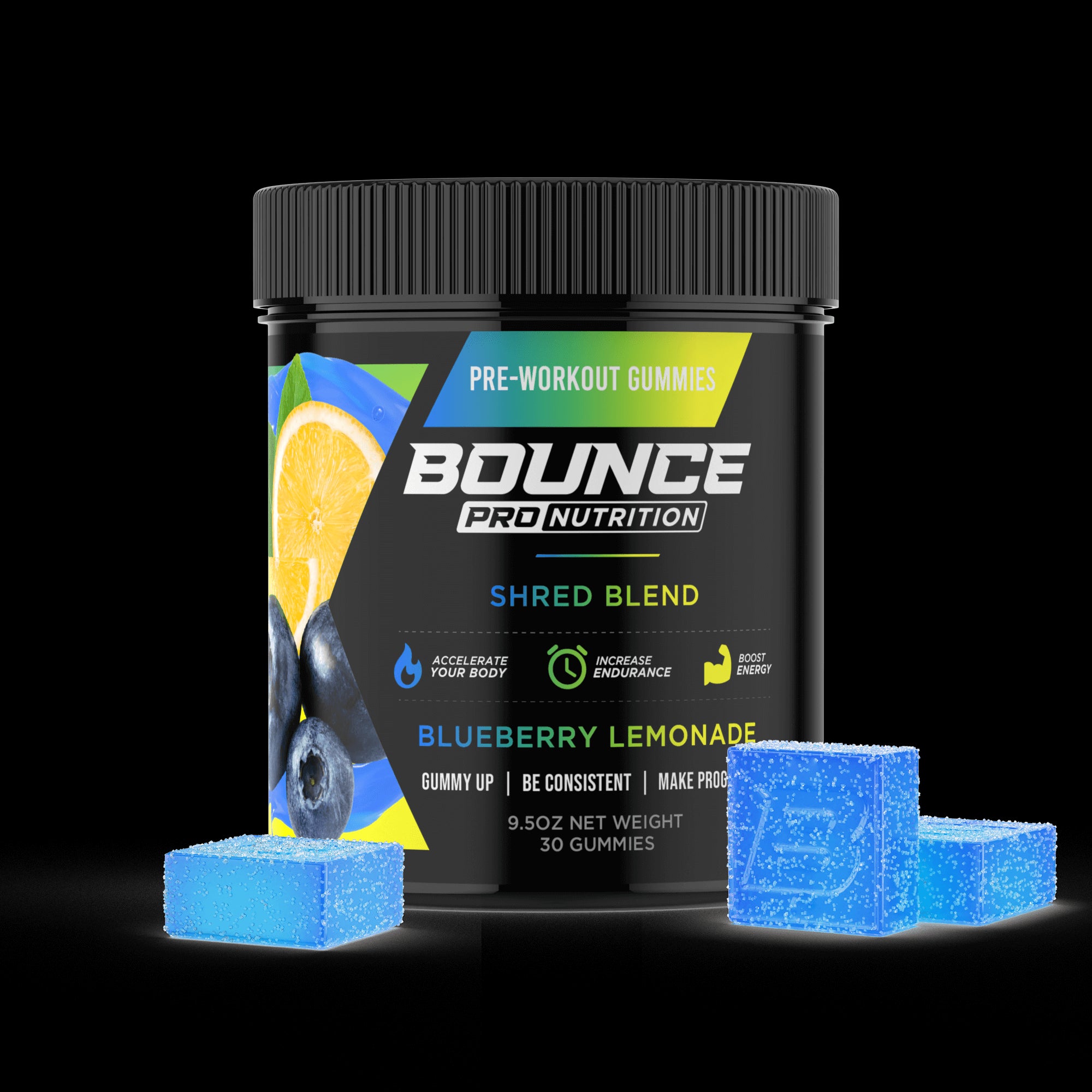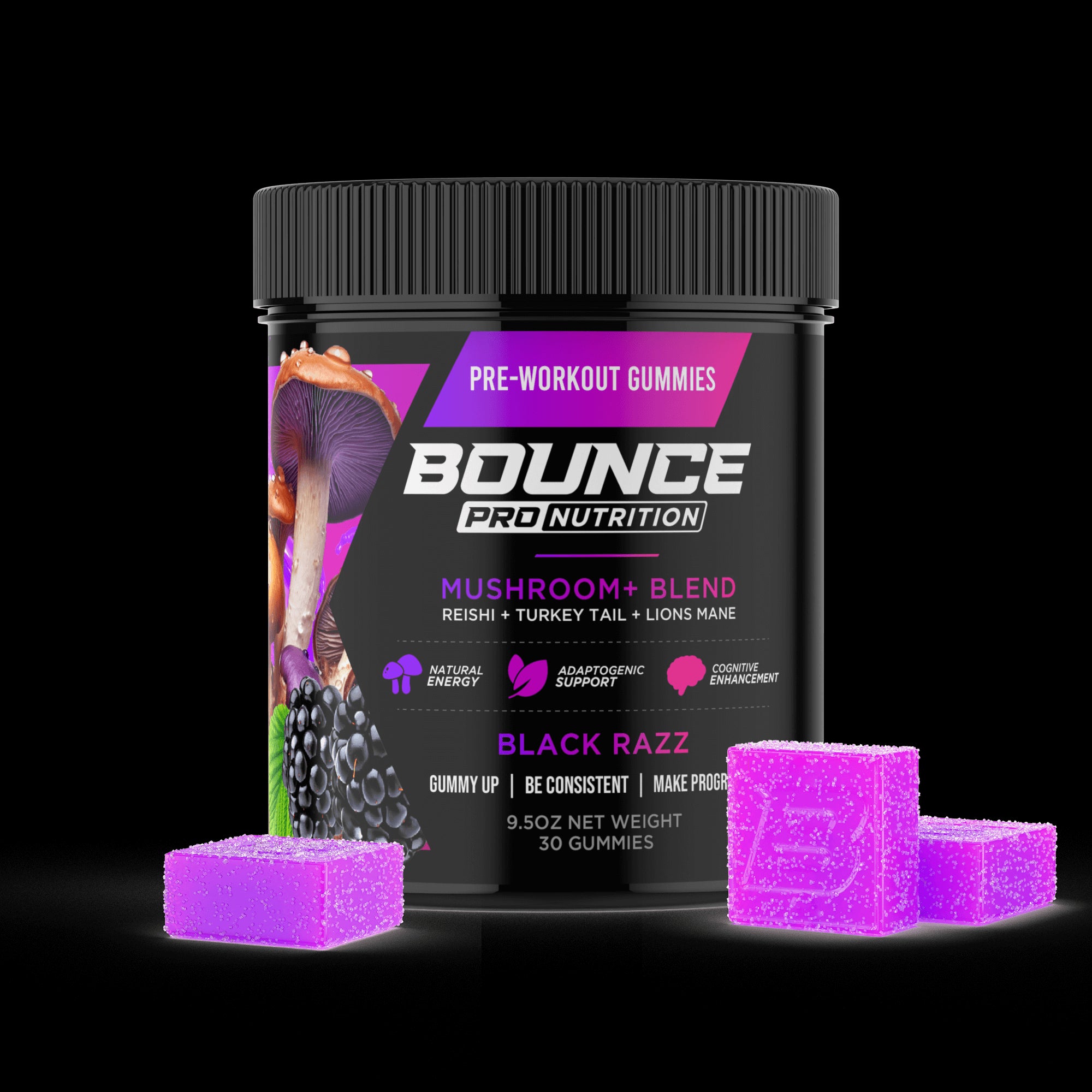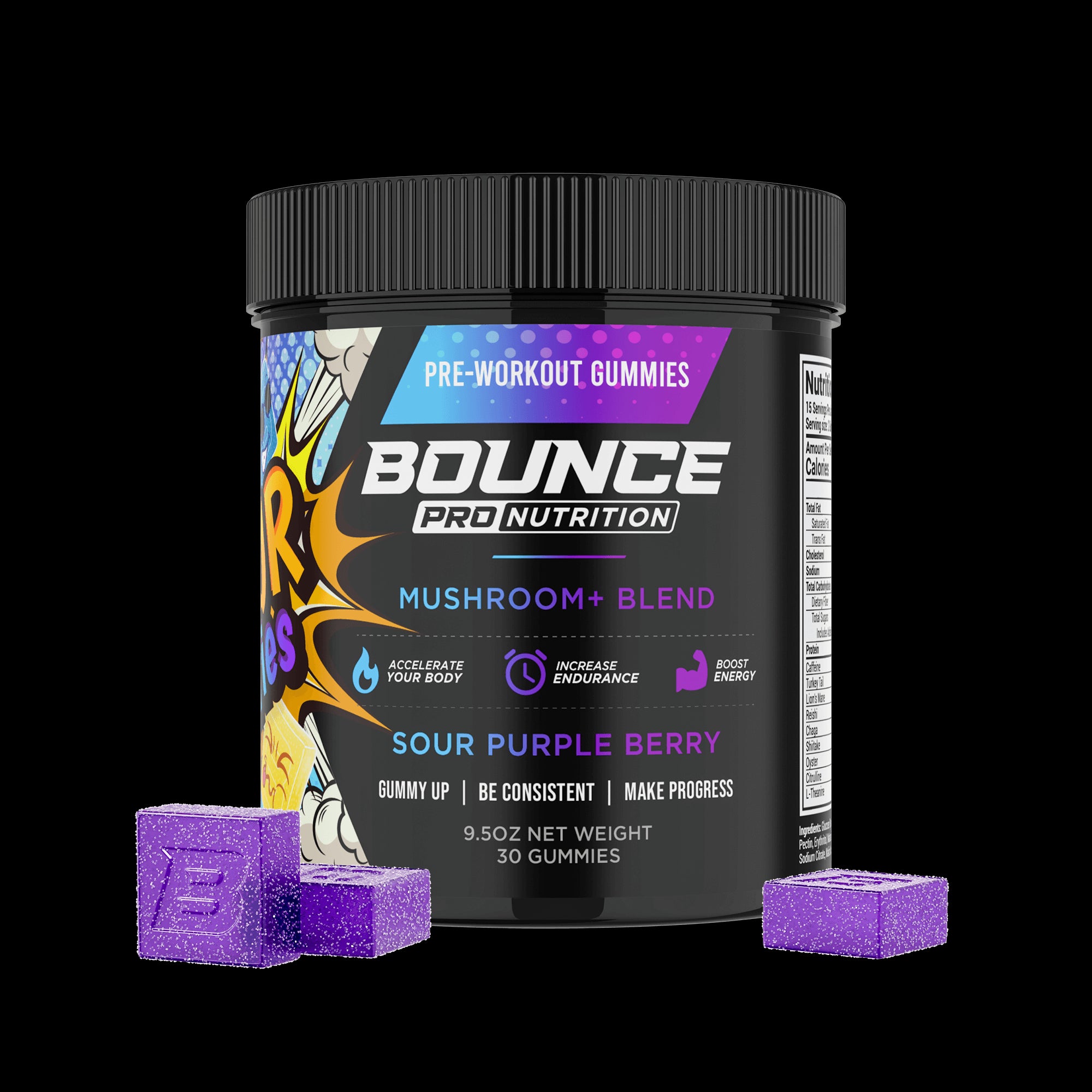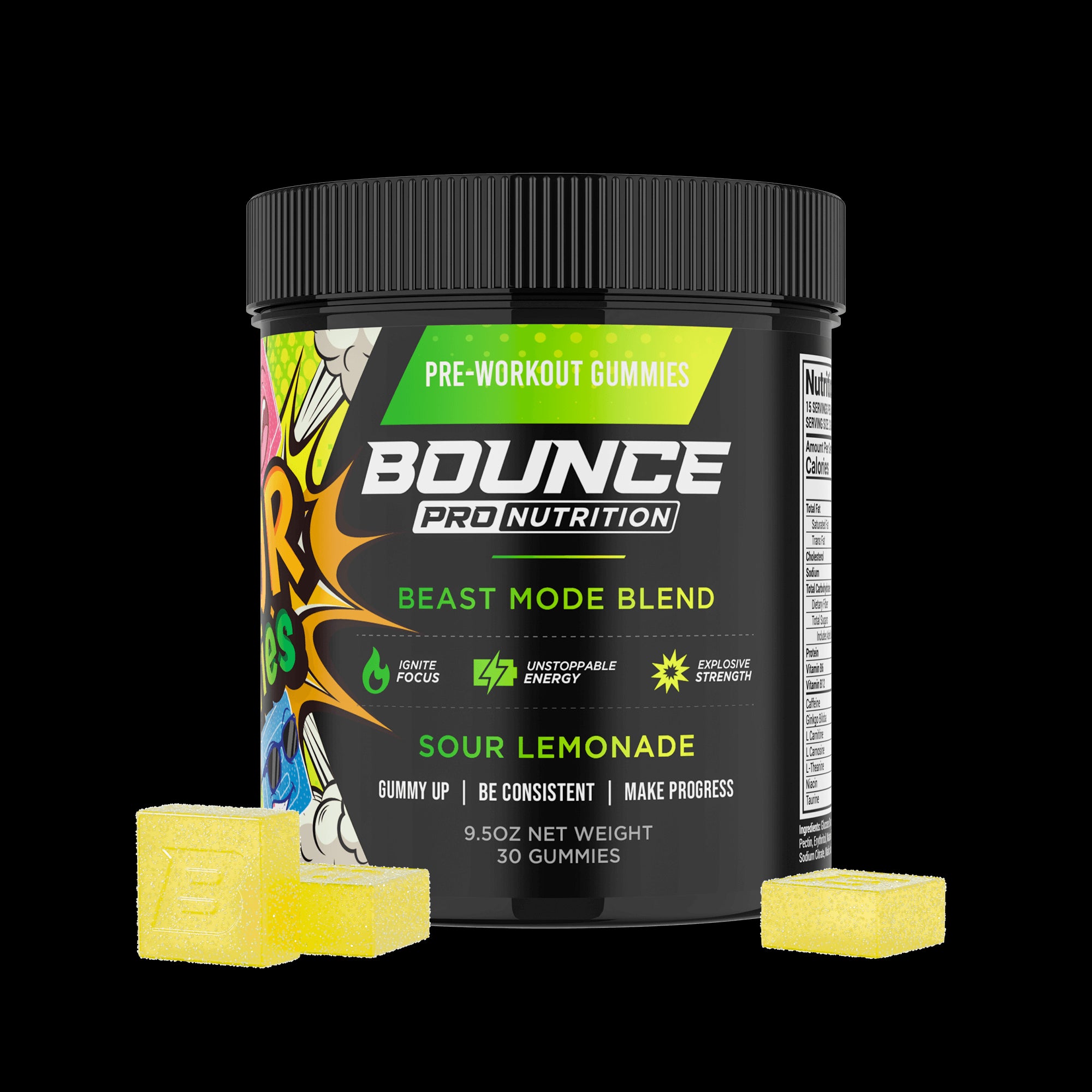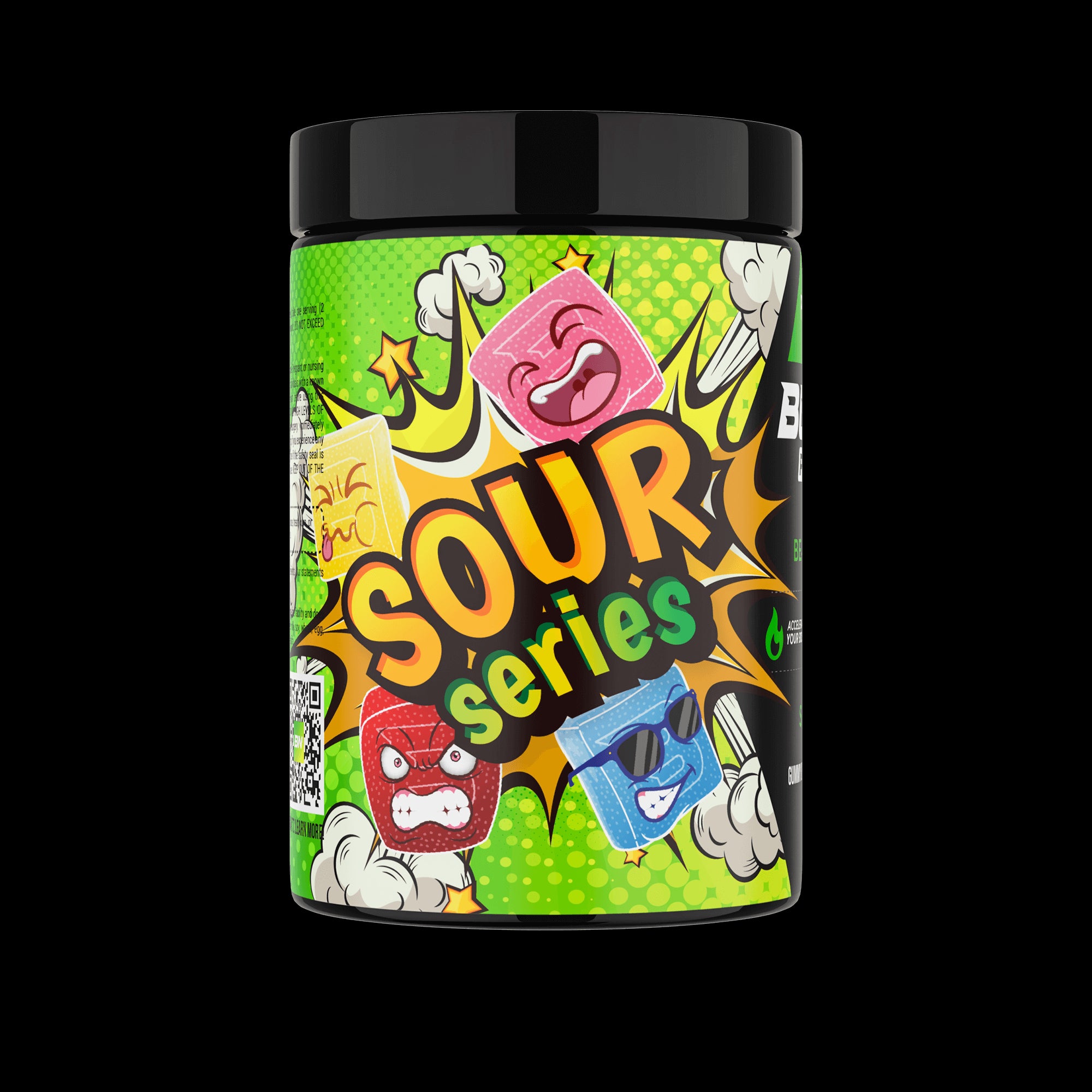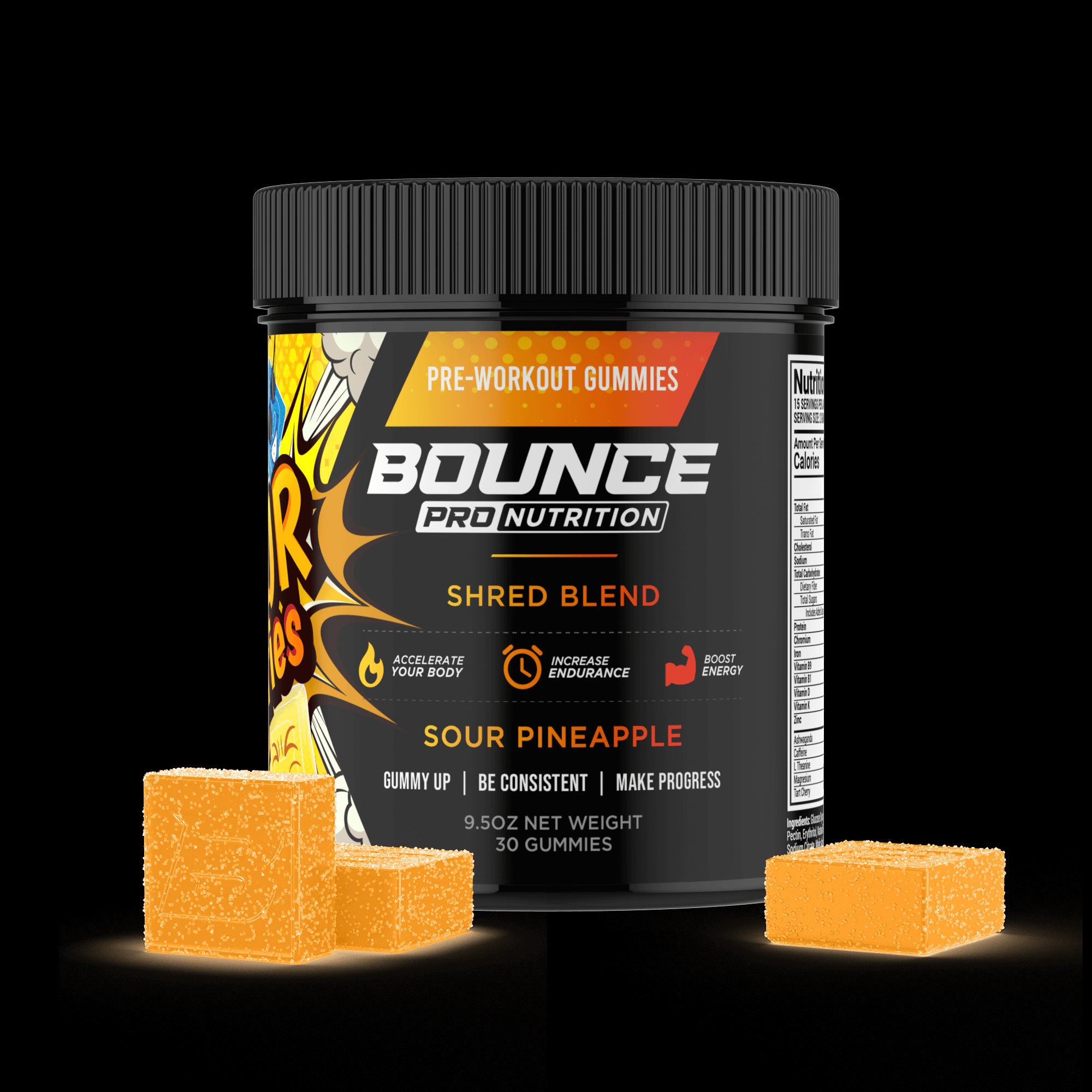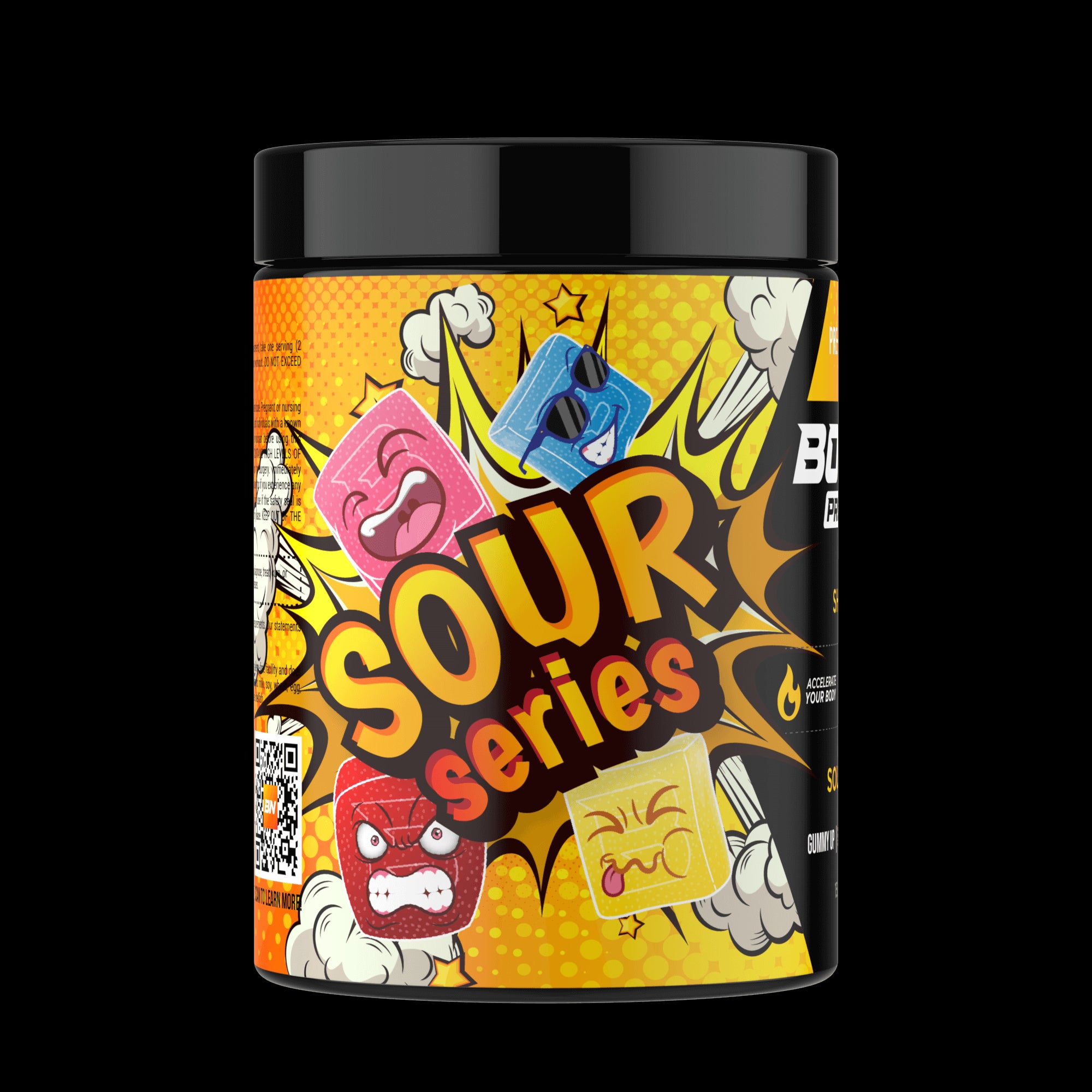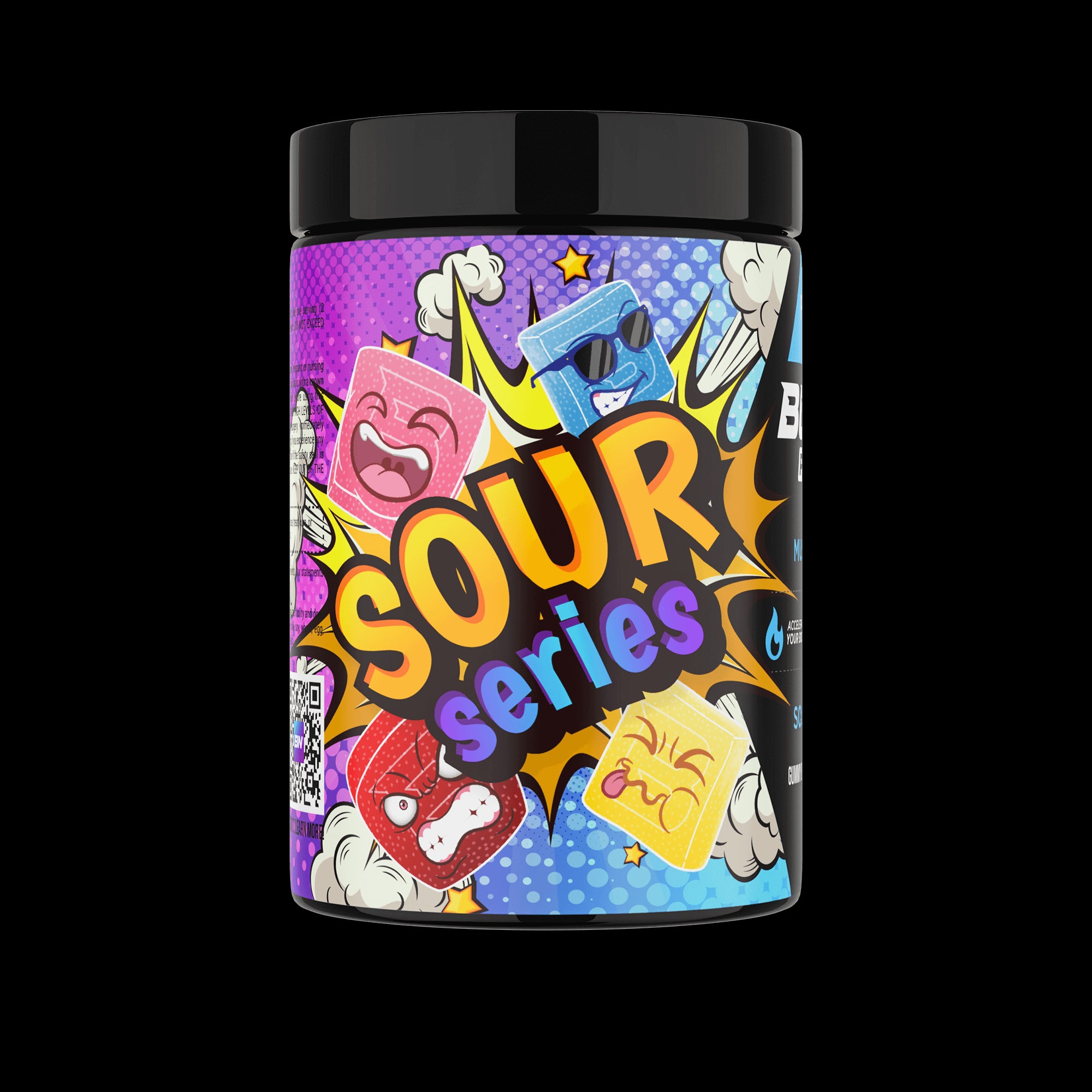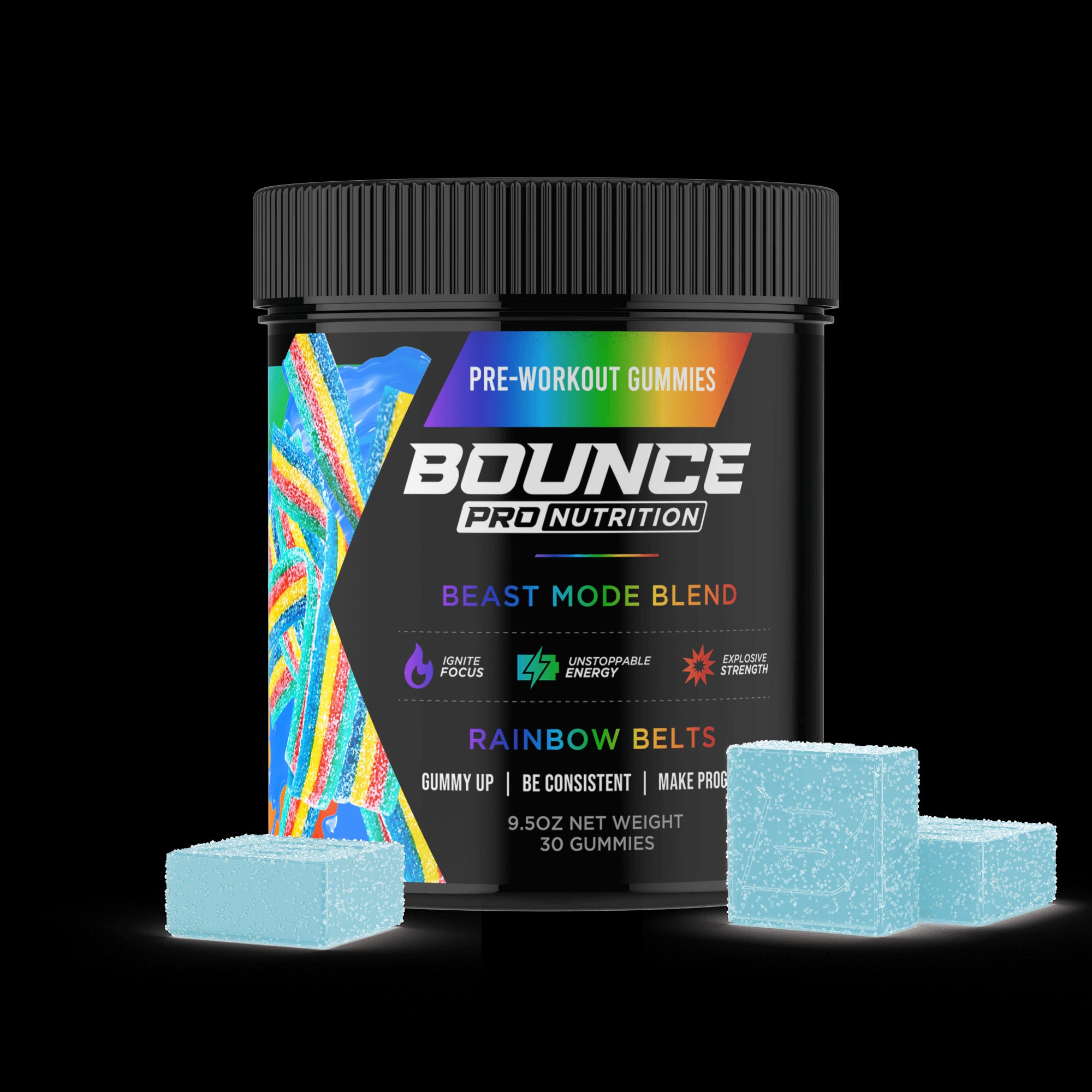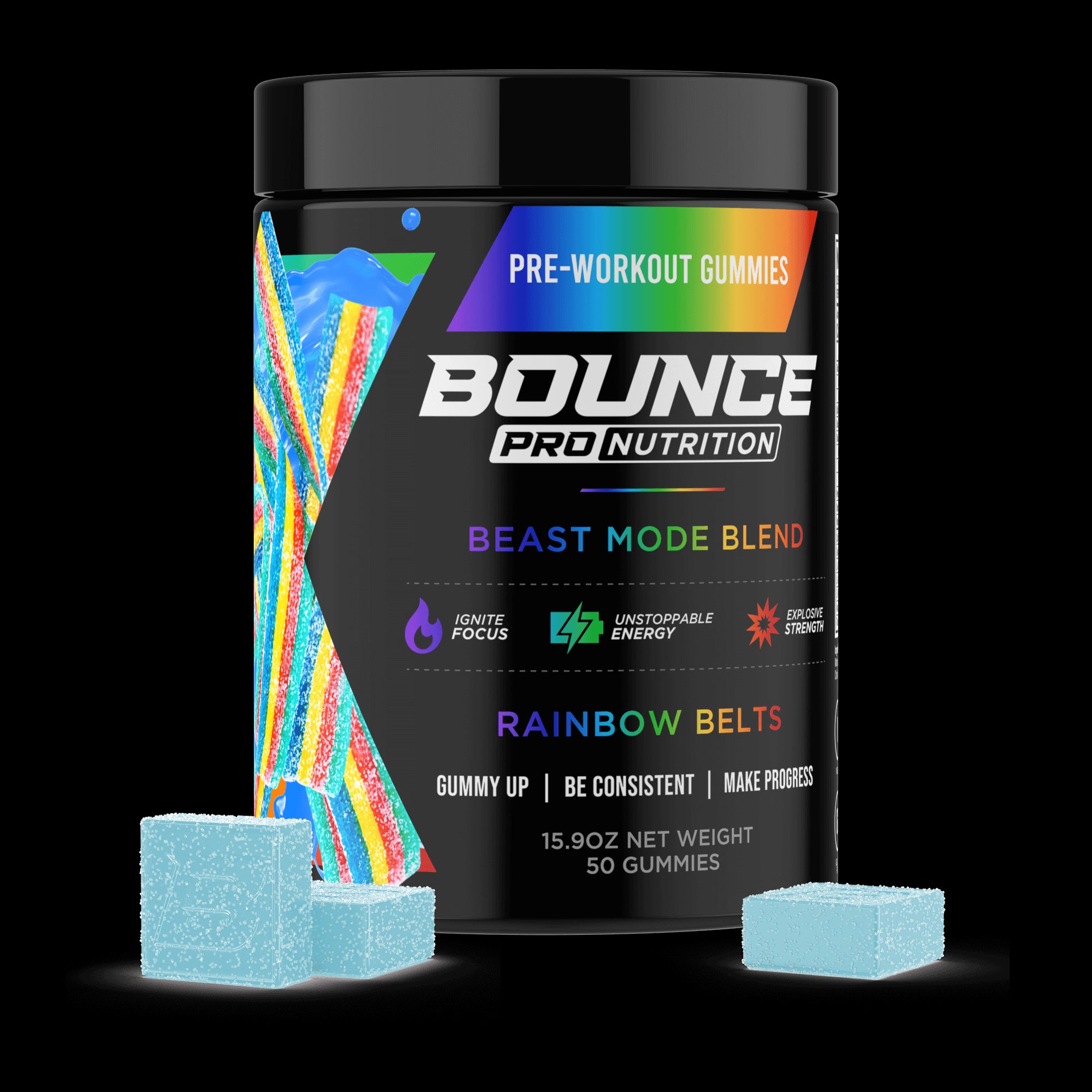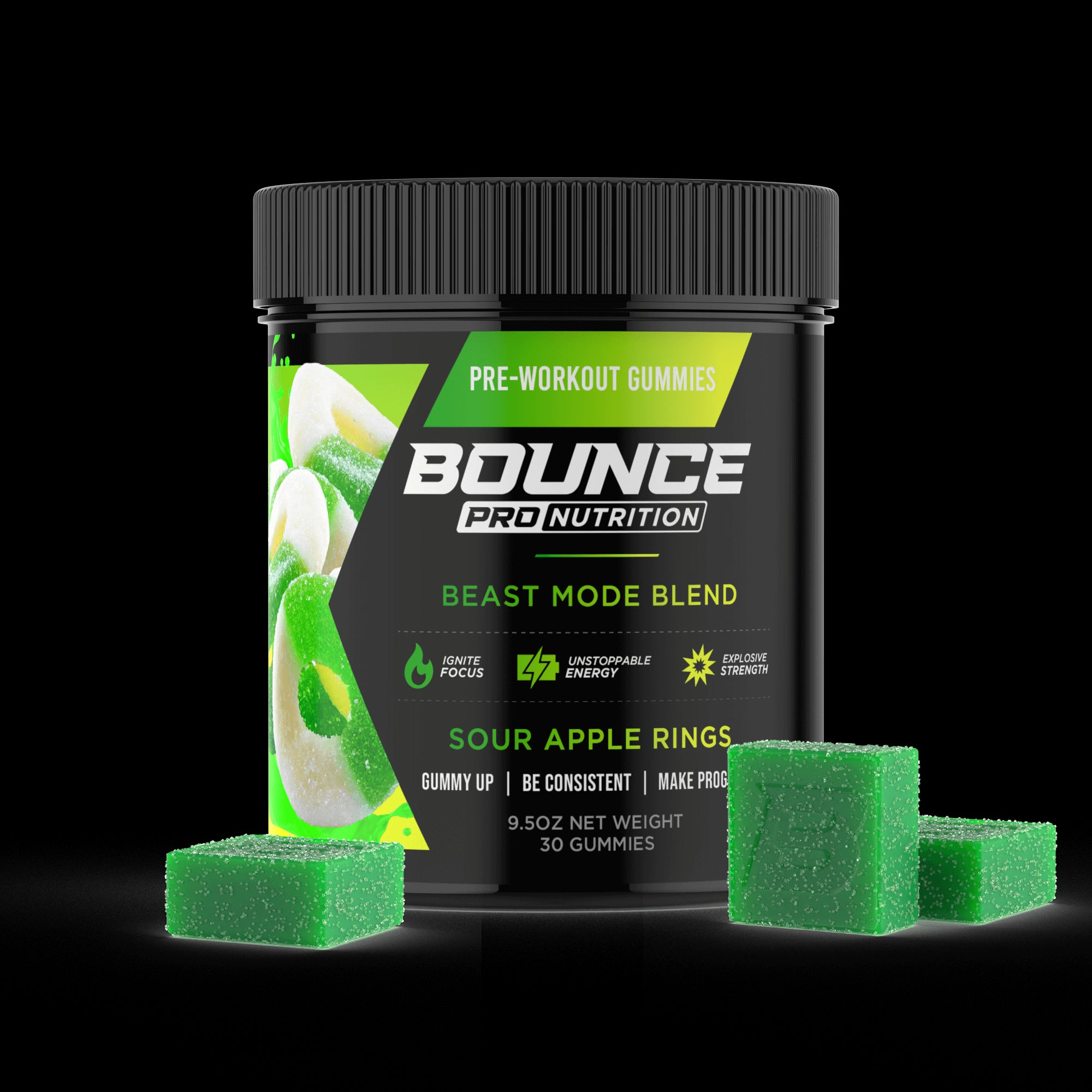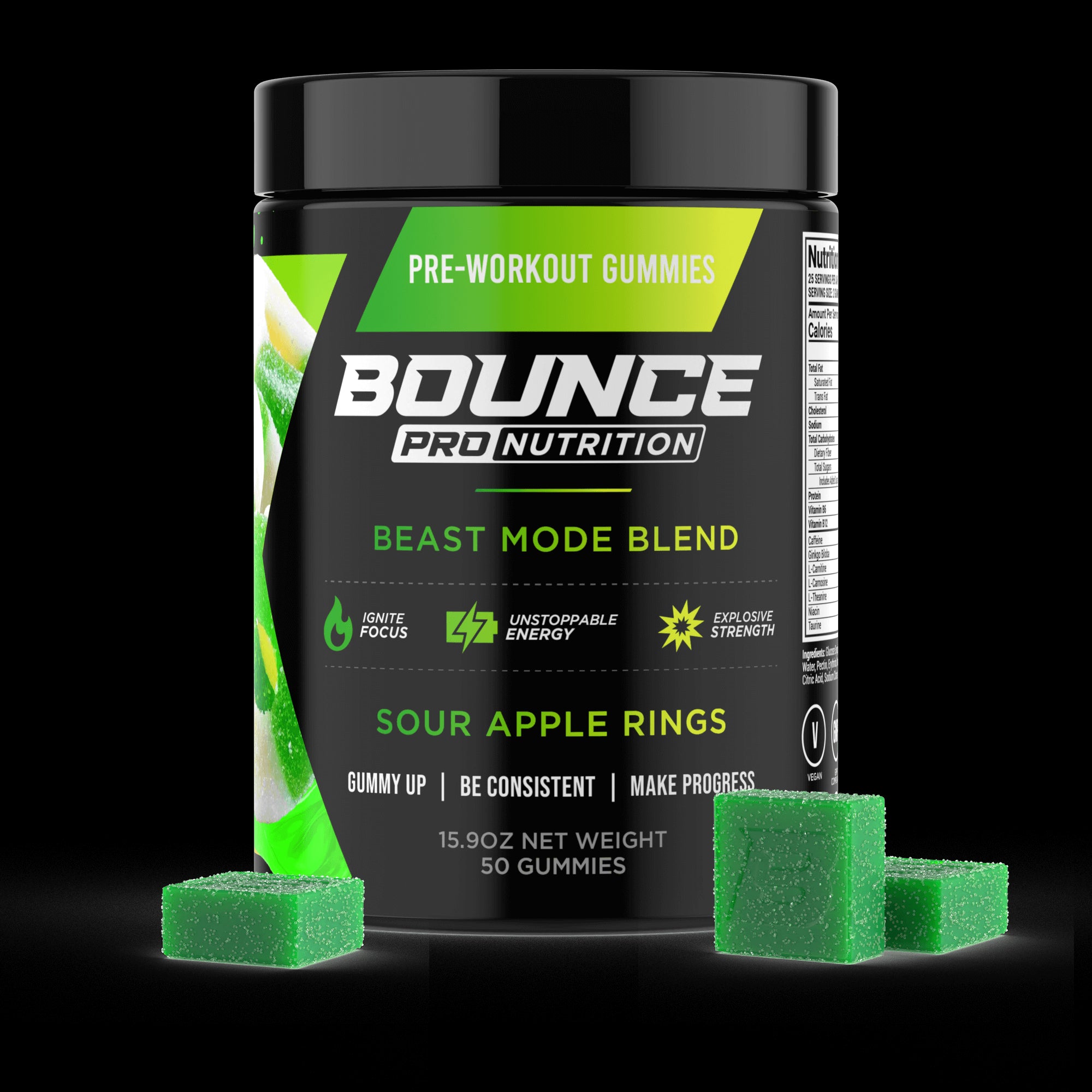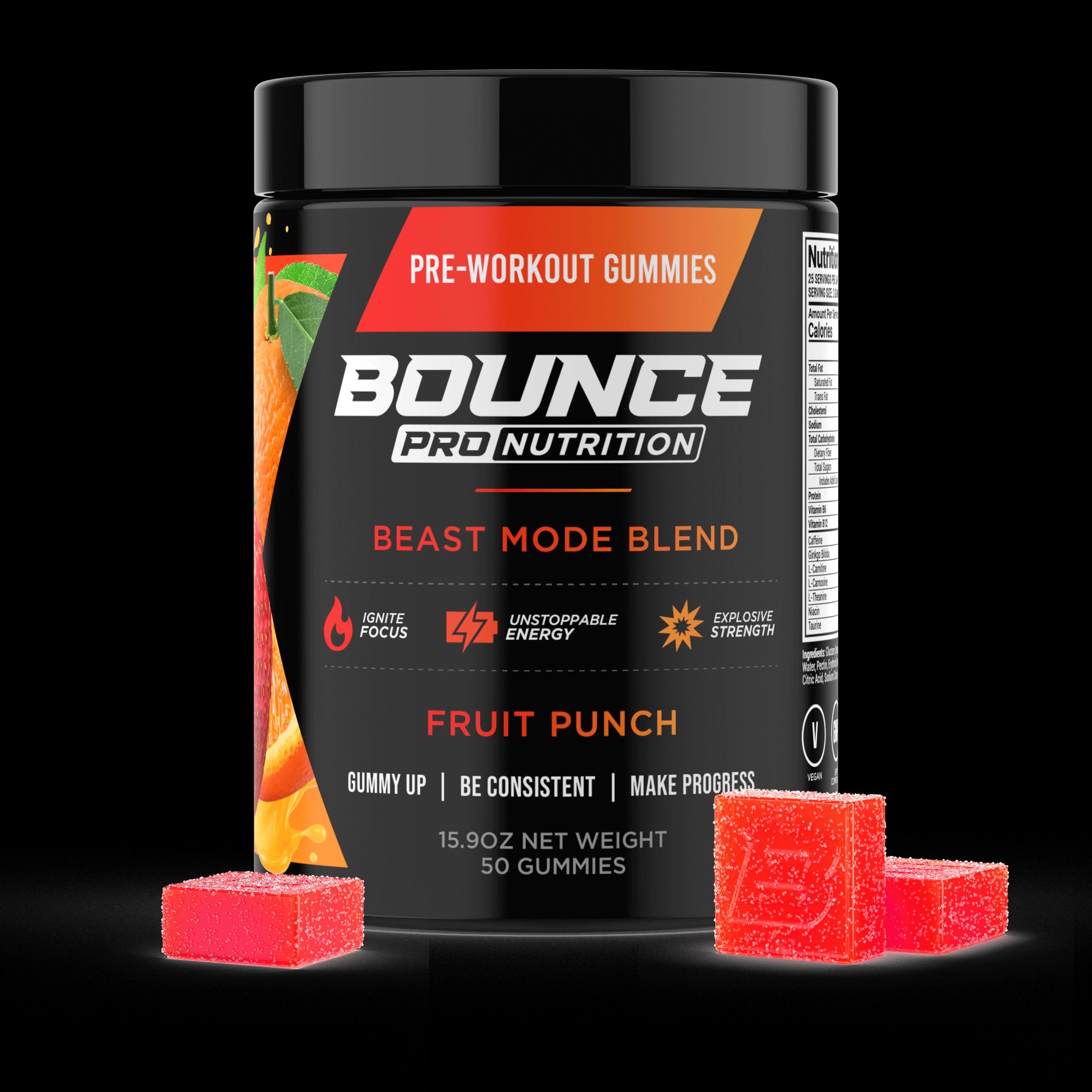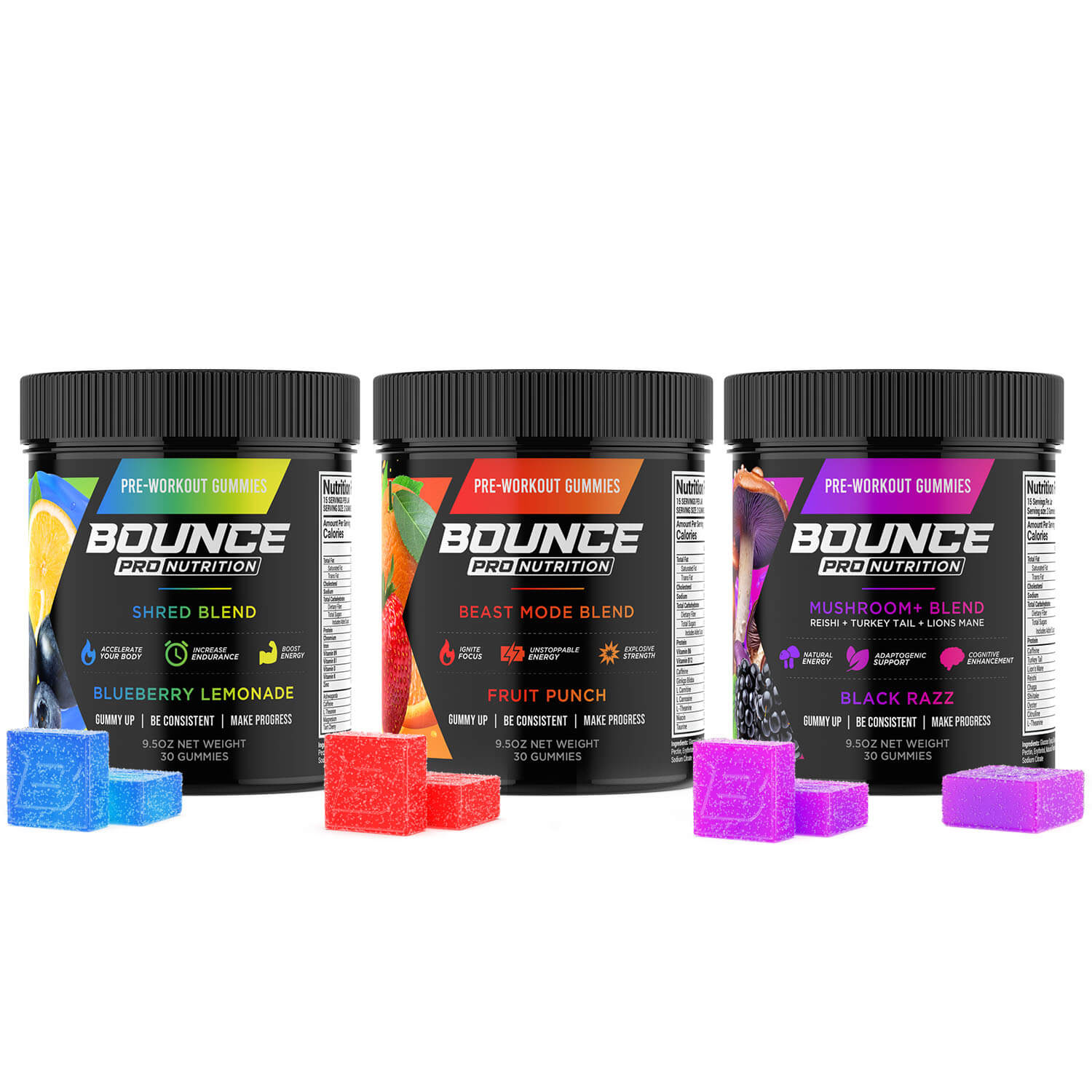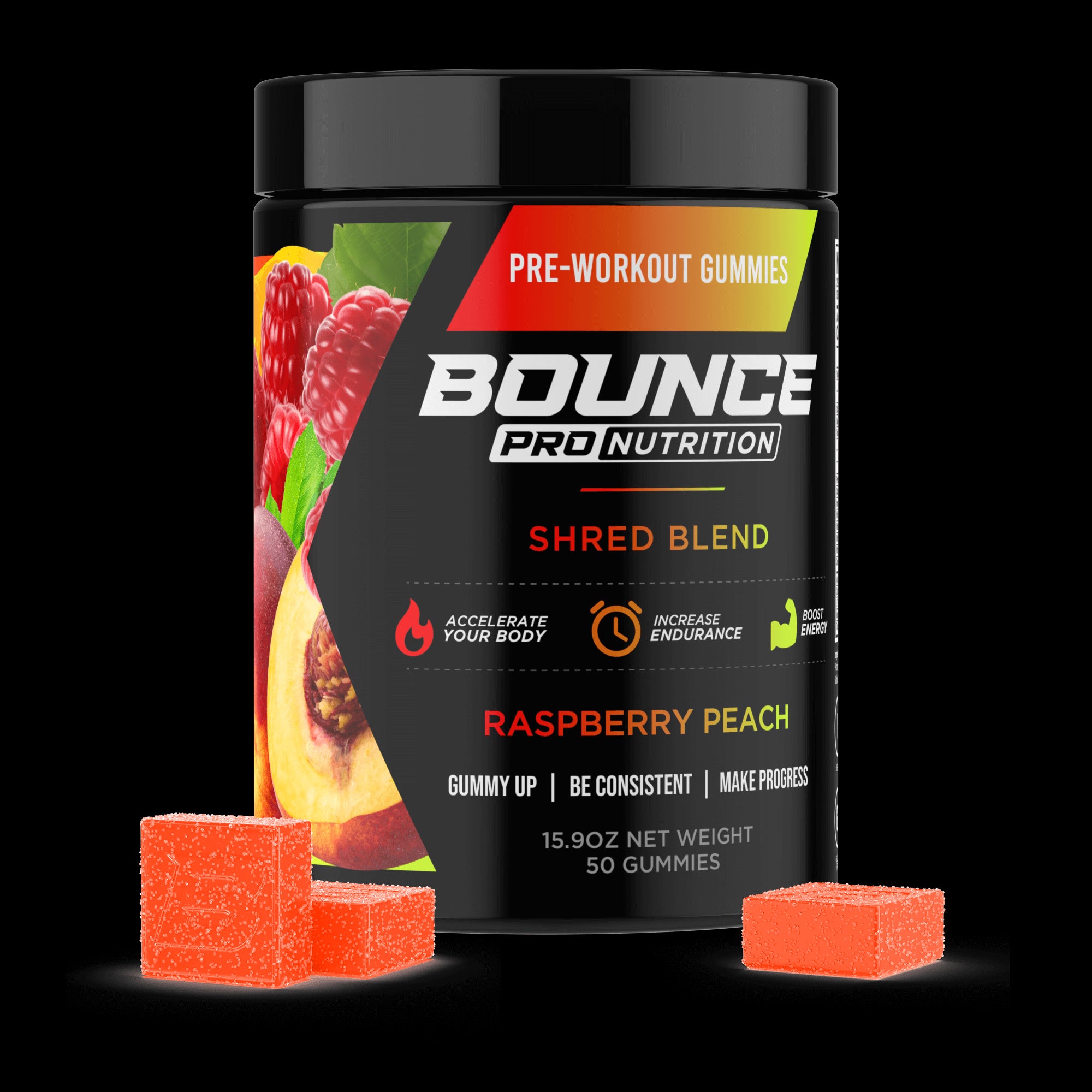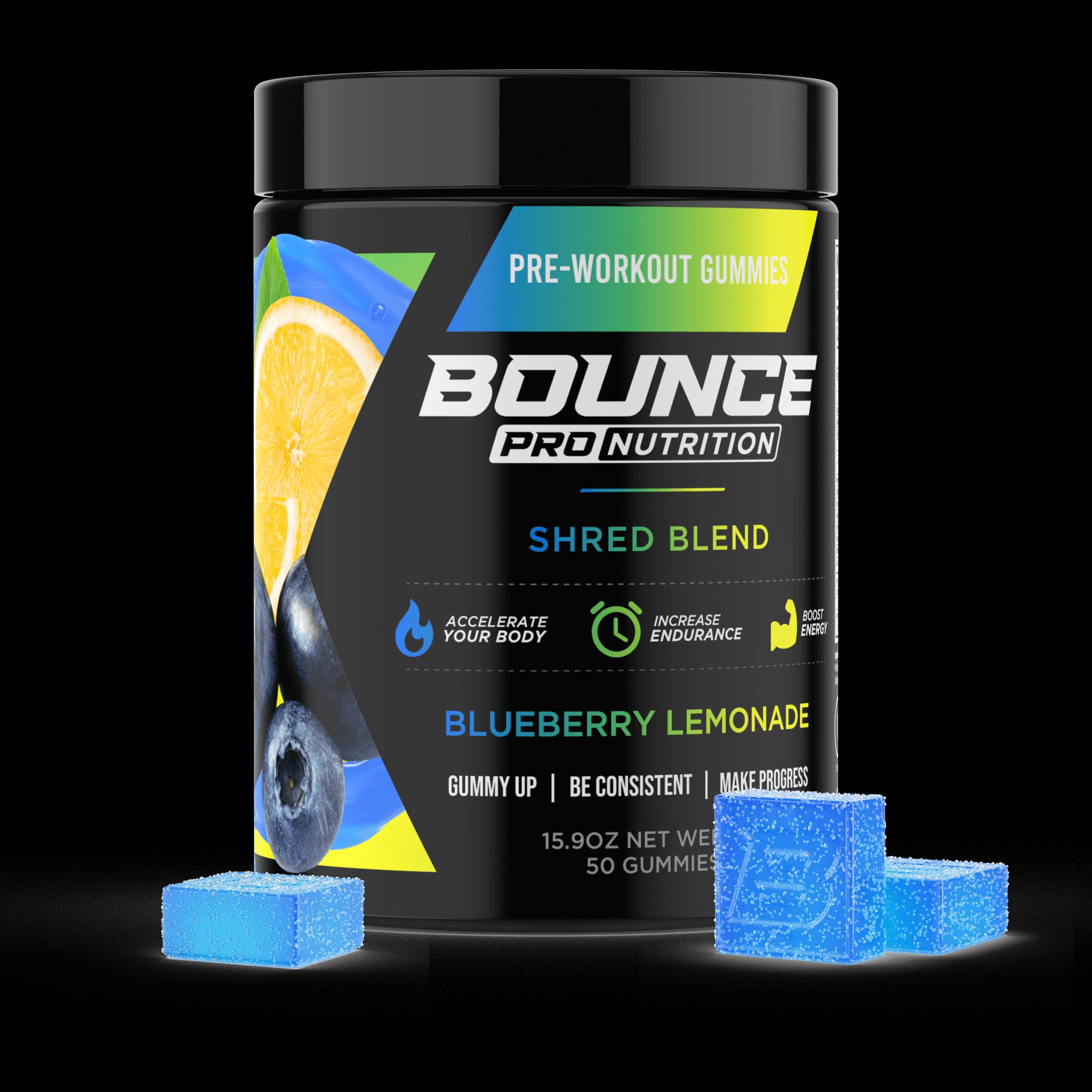There is a unique rhythm to a long day in the saddle, a cadence that transcends the simple turning of pedals. It’s a symphony of whirring chains, steady breathing, and the ever-present rush of wind, a state of sustained effort where the world seems to sharpen and simplify. For the dedicated cyclist, this is the sacred space where the body’s engine is tested and the mind finds a state of focused, moving meditation.
It is here, hours into a ride under a warm summer sun, that the difference between a glorious day of exploration and a grueling suffer-fest is decided. The outcome often hinges not on the grandness of one's fitness, but on the management of microscopic, mission-critical details. It’s a battle fought on a cellular level, a delicate balancing act of fuel, fluid, and the essential minerals that conduct the very electricity of life and movement.
In this precise and demanding world of endurance cycling, success is measured in watts and heartbeats, and increasingly, it is supported by small, powerful, and incredibly convenient tools designed to keep the engine running strong.
TO BUY ELECTROLYTE GUMMIES CLICK HERE
Why is Cycling a Crucial Part of Exercising and Staying Healthy?
Cycling stands as one of the most beneficial and sustainable forms of exercise an individual can engage in, offering a comprehensive suite of health advantages with a uniquely low-impact profile. Its primary benefit is as a world-class cardiovascular workout. The sustained, rhythmic nature of pedaling elevates the heart rate into the ideal aerobic training zone, forcing the heart muscle to adapt and become stronger and more efficient over time.
This leads to a lower resting heart rate, reduced blood pressure, and improved overall circulation. Regular cycling has been shown in countless studies to significantly reduce the risk of major cardiovascular diseases, including heart attack, stroke, and hypertension. By strengthening the body's most vital muscle and improving the efficiency of the entire circulatory system, cycling builds a powerful foundation for long-term health and vitality, making it a cornerstone activity for anyone serious about their well-being.
Beyond its profound cardiovascular benefits, cycling is a phenomenal tool for building muscular strength and endurance, particularly in the lower body. The pedal stroke is a complex movement that engages a host of major muscle groups. The quadriceps and gluteus maximus provide the powerful downward push, while the hamstrings and calf muscles are critical for the upstroke and overall efficiency.
This provides a potent strength-building stimulus without the heavy, joint-jarring impact of many other activities. Furthermore, maintaining a stable position on the bike requires constant engagement of the core muscles in the abdomen and lower back. A strong core is not only essential for transferring power efficiently to the pedals but also contributes to better posture and a reduced risk of back pain in daily life, making cycling a true full-body endeavor.
From a metabolic health and weight management perspective, cycling is an incredibly effective tool. It is a significant calorie-burning activity, allowing individuals to create the energy deficit needed for weight loss or to maintain a healthy body weight with greater ease. A vigorous ride can burn hundreds of calories per hour, and the intensity can be easily adjusted to match one's fitness level. Moreover, consistent cycling helps to build and preserve metabolically active muscle tissue.
Because muscle burns more calories at rest than fat does, having a higher percentage of muscle mass can boost one's basal metabolic rate. This means your body becomes a more efficient calorie-burning engine, even when you're not on the bike. This, combined with cycling's ability to improve insulin sensitivity, makes it a powerful weapon in the prevention and management of metabolic syndrome and Type 2 diabetes.
The positive impact of cycling extends far beyond the physical, offering profound benefits for mental health and cognitive function. The simple act of being outdoors, combined with the rhythmic, repetitive motion of pedaling, can be incredibly meditative and is a proven method for reducing stress and anxiety. Cycling stimulates the release of endorphins and other mood-boosting neurotransmitters like serotonin and dopamine, leading to feelings of well-being and the famed "cyclist's high."
The focus and spatial awareness required to navigate a route and handle a bike also provide a cognitive workout. Research suggests that regular aerobic exercise like cycling can stimulate neurogenesis—the creation of new brain cells—and improve blood flow to the brain, which has been linked to enhanced memory, sharper cognitive function, and a reduced risk of age-related cognitive decline.
One of the most appealing aspects of cycling is that it is a "lifespan" activity, thanks to its exceptionally joint-friendly nature. The fluid, circular motion of pedaling places very little direct impact stress on the joints of the ankles, knees, and hips. This makes it an ideal form of exercise for a vast range of people, including those who are overweight, recovering from certain injuries, or suffer from joint conditions like arthritis that make high-impact activities like running painful or impossible.
This low-impact profile means that individuals can continue to cycle vigorously and consistently well into their senior years, allowing them to maintain their cardiovascular health, strength, and functional independence for much longer. This accessibility makes cycling a wonderfully sustainable and inclusive form of fitness.
Finally, cycling offers a unique blend of personal health benefits with positive environmental and social implications. Choosing to commute by bike instead of by car reduces one's carbon footprint, decreases traffic congestion, and eliminates the stress of searching for parking. It transforms a mundane daily task into an opportunity for invigorating exercise and fresh air.
Cycling is also a fantastic way to explore one's local community or new destinations from a more intimate and engaging perspective than a car window allows. It fosters a sense of adventure and discovery, whether you're finding a new path in a local park or undertaking a multi-day bike tour in a new country. This connection to one's environment and the simple joy of human-powered travel add a rich layer of fulfillment to the act of staying healthy.
Why Do Most People Enjoy Cycling?
The appeal of cycling is a powerful and multifaceted force, capturing the hearts and minds of millions around the globe for reasons that extend far beyond simple exercise. For many, the bicycle is a vehicle of liberation, a machine that transforms physical effort into a profound sense of freedom and exploration. It offers a perfect and unique pace for experiencing the world—faster than walking, allowing you to cover significant ground, yet far more intimate and immersive than driving in a car.
This joy is found in the simple act of discovery, whether it's finding a hidden café on a city side street, cresting a hill to reveal a stunning new vista, or navigating a winding forest path for the first time. The bicycle empowers individuals to create their own adventures, turning a simple ride into a personal journey.
This sense of freedom is often paired with the pure, visceral thrill of speed and motion. The feeling of accelerating on a flat road, the rush of wind as you carve through a smooth corner, or the controlled chaos of descending a mountain trail at speed provides a tangible and exhilarating adrenaline rush. It's a feeling of flying, of being propelled by the power generated from your own body.
This dynamic experience is deeply engaging and satisfying, a stark contrast to the static nature of many indoor workouts. For many cyclists, this feeling of graceful, powerful movement is the very essence of the sport's appeal, a feeling that gets them hooked and keeps them coming back for more, chasing that perfect sensation of flow and velocity. Let’s explore this further:
-
The Powerful Social Connection and Community: While cycling can be a wonderfully solitary activity, it also boasts one of the most vibrant and welcoming social communities in all of sports. The group ride is a cornerstone of cycling culture, offering a unique blend of social interaction and shared physical challenge. Riding in a paceline, working together to slice through the wind, creates a powerful sense of camaraderie and teamwork. Local cycling clubs, charity rides, and gran fondos provide countless opportunities to meet like-minded people, share stories, and build lasting friendships. For many, the post-ride coffee and conversation are just as important and enjoyable as the ride itself.
-
The Meditative Rhythm and Mental Escape: The steady, repetitive cadence of pedaling can have a profoundly meditative effect on the mind. Similar to the way a mantra or focused breathing works in traditional meditation, the rhythm of cycling allows the mind to quiet the incessant chatter of daily anxieties and stressors. A long ride provides a dedicated and uninterrupted block of time to process thoughts, work through complex problems, or simply let the mind wander freely. This mental escape is a powerful form of stress relief, allowing cyclists to return to their daily lives feeling calmer, more centered, and with a renewed sense of perspective.
-
The Tangible Sense of Challenge and Accomplishment: Cycling is a sport that is rich with opportunities for setting and achieving measurable goals. The data-driven nature of modern cycling, with metrics like distance, speed, elevation, and power output, allows individuals to track their progress with incredible precision. The feeling of completing your first "century" (a 100-mile ride), conquering a notoriously difficult local climb, or seeing your average speed increase over time provides a potent and deeply satisfying sense of accomplishment. This process of overcoming challenges builds confidence and a sense of mastery that permeates all other aspects of a cyclist's life.
-
A Deep Connection with Technology and Gear: For a significant portion of the cycling community, a deep appreciation for the equipment itself is a major part of the enjoyment. The bicycle is a beautiful and elegant piece of engineering, and many cyclists become passionate "gear heads." They enjoy learning about the nuances of frame materials, aerodynamic components, and drivetrain technology. They take pride in maintaining, cleaning, and upgrading their bikes. This technological aspect adds another layer of engagement to the hobby, blending the physical pursuit with an intellectual and technical one, satisfying a desire for tinkering, optimization, and craftsmanship.
So, What Does it Mean and Take to Be a Good Cyclist?
Being a "good cyclist" is a concept that extends far beyond the raw numbers on a power meter, or the speed displayed on a GPS computer. While speed and strength are admirable qualities, true proficiency in the sport is a holistic endeavor, blending physical fitness with technical skill, tactical intelligence, and a deep, intuitive understanding of one's own body and equipment.
A good cyclist is not necessarily the one who is always the fastest, but the one who is smoothest, safest, most efficient, and most resilient. It's about having the wisdom to know when to push and when to hold back, the skill to handle the bike with confidence in any situation, and the discipline to consistently do the things that support long-term progress and enjoyment.
Ultimately, becoming a good cyclist is a continuous process of learning and refinement. It involves graduating from being a simple passenger on the bike to becoming its master, developing a symbiotic relationship where the machine feels like a natural extension of your own body. It means embracing the fact that fitness is only one piece of the puzzle.
A truly good cyclist dedicates themselves to mastering bike handling skills, understanding the principles of pacing and energy conservation, and learning the basics of mechanical maintenance. They cultivate a mental toughness that allows them to suffer gracefully and a self-awareness that helps them avoid overtraining and injury, ensuring that their passion for the sport can be a lifelong pursuit. To expand on this a bit more, it’s about:
-
Consistency and Structured Training: This is the universal foundation for improvement in any endurance sport. A good cyclist understands that fitness is built not in a handful of epic, weekend rides, but through the cumulative effect of consistent, week-in, week-out effort. They follow a structured approach to training, even if it's a simple one, that incorporates variety. They know that not every ride should be an all-out effort. Their weekly plan might include long, steady rides to build their aerobic base, shorter, high-intensity interval sessions to boost their top-end power, and easy, recovery rides to aid adaptation. This purposeful variation is what drives progress and prevents burnout.
-
Superb Bike Handling Skills: Fitness is useless if you can't control your bike. A good cyclist invests time in developing their handling skills to the point where they become second nature. This includes the ability to corner smoothly and confidently at speed, descend steep hills with control and stability, and ride in close proximity to others in a group without being a hazard. They practice skills like looking over their shoulder without swerving, grabbing a water bottle without looking down, and navigating obstacles like potholes and road debris with fluid, calm reactions. These skills are what define a safe, efficient, and respected rider.
-
Mastery of Pacing and Effort: A novice rider often has only two speeds: too hard and stopped. A good cyclist, on the other hand, is a master of pacing and energy conservation. They have a finely tuned sense of their own perceived exertion (RPE) and can accurately gauge their effort levels. Many use tools like a heart rate monitor or a power meter to train and race with precision, understanding their specific physiological zones. They know how to meter out their energy over the course of a long ride or race, saving their matches for the critical moments and avoiding the catastrophic mistake of "blowing up" by going out too hard.
-
Nutritional and Hydration Discipline: A good cyclist treats their body like a high-performance engine and understands that it requires high-performance fuel. They don't just eat and drink randomly; they have a plan. They know the importance of carbohydrate loading before a big event, they practice their on-bike fueling strategy during training rides, and they prioritize post-ride recovery nutrition to refuel glycogen stores and repair muscle. They are meticulous about their hydration and electrolyte intake, understanding that even minor dehydration can have a massive negative impact on their power output and mental focus.
-
Mechanical Empathy and Basic Maintenance: While not everyone needs to be a master mechanic, a good cyclist has a fundamental understanding of and respect for their equipment. They know how to perform basic maintenance tasks like cleaning their drivetrain, checking their tire pressure before every ride, and fixing a flat tire on the side of the road. This "mechanical empathy" not only saves them from being stranded but also ensures their bike is running safely, efficiently, and quietly. They can identify the early warning sounds of a potential mechanical issue before it becomes a major problem.
-
Mental Fortitude and Tactical Awareness: Cycling, especially in a group or race setting, is as much a mental game as a physical one. A good cyclist cultivates the mental toughness to endure the discomfort of a hard climb or a long headwind section without cracking. They learn to suffer with a purpose. In a group setting, they are tactically aware. They understand the principles of drafting and energy conservation, they can read the dynamics of the group, and they can anticipate attacks or changes in pace. They are not just a strong engine; they are a smart rider.
What Types of Cyclists are There?
The world of cycling is a vast and wonderfully fragmented universe, home to a diverse array of tribes and subcultures, each with its own unique ethos, equipment, and definition of what it means to be "on a bike". While the unifying element is the simple, elegant machine with two wheels, the way it is used and the terrain it is used upon can create dramatically different experiences and demand vastly different skill sets.
To simply call someone a "cyclist" is to only scratch the surface of their identity within this rich tapestry. Are they a road cyclist obsessed with aerodynamics and marginal gains, or a mountain biker who finds joy in technical descents and a bit of mud? Are they a commuter using their bike as a practical tool, or a bikepacker seeking adventure and self-sufficiency?
Understanding these different classifications is key to appreciating the sheer breadth and depth of cycling culture. These categories are not mutually exclusive, and many of the most passionate cyclists will participate in multiple disciplines, happily swapping their skinny road tires for knobby mountain bike tires depending on the day and their mood.
However, looking at the cycling world through these different lenses—the discipline they practice, their role within a race, their core motivation, and their general attitude—provides a valuable framework for navigating its many nuances. It reveals that there is no single "correct" way to be a cyclist, but rather an endless spectrum of possibilities waiting to be explored. The following sections delve into some of the most common ways to classify the members of this passionate and diverse community.
Cycling Discipline
The most common and definitive way to classify a cyclist is by their chosen discipline. This is defined by the type of bicycle they ride and, most importantly, the type of terrain they ride it on. Each discipline has its own unique culture, required skill set, and community, and a cyclist's chosen discipline shapes almost every aspect of their interaction with the sport:
-
Road Cycling: This is the most traditional and widely recognized form of cycling. Road cyclists ride lightweight, aerodynamic bikes with skinny tires on paved surfaces. The discipline is often focused on speed, efficiency, and endurance over long distances. It encompasses everything from casual group rides and charity centuries to the highest levels of professional racing, like the Tour de France. The culture values things like drafting, paceline etiquette, and often, a clean, classic aesthetic.
-
Mountain Biking (MTB): Mountain bikers seek out dirt, rocks, roots, and challenging, unpaved trails. They ride robust bikes with wide, knobby tires, powerful brakes, and sophisticated suspension systems designed to absorb impacts. The sport is incredibly diverse, with sub-disciplines ranging from cross-country (XC), which emphasizes climbing and endurance, to downhill (DH), which is a gravity-fueled test of skill and courage. It requires exceptional bike handling skills, balance, and a willingness to get a little dirty.
-
Gravel Cycling: Occupying the rapidly growing space between road cycling and mountain biking, gravel cycling is all about exploration on unpaved roads, fire roads, and light singletrack. Gravel bikes are versatile machines, looking like a road bike but with clearance for wider, more durable tires and more stable geometry. This discipline combines the endurance and speed of road riding with the adventure and technical challenge of off-road riding, attracting those who want to escape traffic and explore less-traveled paths.
-
Track Cycling: Track cyclists compete on steeply banked, oval tracks called velodromes. They ride highly specialized, fixed-gear bikes with no brakes, demanding incredible skill and smoothness. Track cycling events are a test of pure power and tactics, ranging from explosive sprints to grueling endurance events like the points race. It is a discipline of pure, unadulterated speed and requires a unique blend of anaerobic power and tactical intelligence.
-
BMX (Bicycle Motocross): BMX cycling has two main forms: racing and freestyle. BMX racing takes place on short, dirt tracks with jumps and banked turns, requiring explosive power and bike handling skills to navigate the course at high speed. Freestyle BMX involves performing tricks and stunts on ramps, in skateparks, or on street obstacles. Both forms use small, durable, single-speed bikes and are heavily influenced by a vibrant youth culture.
-
Cyclocross (CX): Cyclocross is a unique and challenging form of racing that takes place in the fall and winter. Riders complete multiple laps of a short, off-road course that features a mix of grass, dirt, mud, and man-made obstacles that often force them to dismount and carry their bikes. It requires a combination of high-intensity aerobic fitness, superb bike handling skills in slippery conditions, and the ability to repeatedly dismount and remount the bike smoothly.
-
Fat Biking: As the name suggests, fat biking involves riding bikes with extremely wide, "fat" tires that are run at very low pressures. These bikes are designed to float over soft surfaces where normal bikes would sink, making them ideal for riding on snow in the winter or on sand dunes and beaches. Fat biking has opened up a whole new season of riding for cyclists in colder climates, offering a fun and unique way to explore winter landscapes.
-
Cycle Touring and Bikepacking: These disciplines are about long-distance, multi-day, self-supported travel by bike. Cycle touring typically involves riding on roads with a sturdy touring bike outfitted with racks and panniers to carry gear. Bikepacking is the off-road equivalent, using a mountain or gravel bike with a more minimalist setup of frame bags to navigate trails and remote backcountry routes. The focus for both is not on speed, but on adventure, self-sufficiency, and the journey itself.
Role in Road Racing
Within the specific discipline of competitive road cycling, riders often specialize in certain roles based on their unique physiological strengths. A professional cycling team is a complex and strategic unit, and each rider has a specific job to do to support the team's overall goal, which is usually to set up their designated leader for a victory:
-
Climbers: Climbers are riders who excel on steep, mountainous terrain. They typically have a very high power-to-weight ratio, meaning they are very lean and lightweight but can produce a large amount of power for their size. Their ability to dance on the pedals up long mountain passes with seeming effortlessness is what allows them to gain time on their rivals in the high mountains of Grand Tours.
-
Sprinters: Sprinters are the pure powerhouses of the peloton, possessing an incredible amount of fast-twitch muscle fiber. Their specialty is the final, chaotic, high-speed dash to the finish line on flat stages. They can produce an enormous amount of power for a very short period (10-20 seconds). The entire team will often work together in the final kilometers of a race to protect their sprinter and deliver them to the last 200 meters in a perfect position to launch their explosive sprint.
-
Puncheurs: A puncheur (French for "puncher") is a rider who specializes in short, steep climbs and rolling terrain. They have the ability to make repeated, explosive attacks on hills that are too long for a pure sprinter but not long enough for a pure climber. They are often contenders in the "Spring Classics," one-day races famous for their short, punchy climbs and often difficult weather conditions.
-
Domestiques: The domestique (French for "servant") is the selfless workhorse of the team. They are strong, versatile riders whose primary job is to support and protect their team leader. Their tasks include fetching water bottles from the team car, shielding the leader from the wind by letting them draft behind them, chasing down attacks from rival teams, and sacrificing their own chances for the good of the team. A team leader is nothing without their loyal domestiques.
-
All-rounders (GC Contenders): An all-rounder, often called a General Classification (GC) contender, is a rider who is proficient in all aspects of stage racing. To win a Grand Tour like the Tour de France, a rider cannot have any significant weaknesses. They must be able to climb with the best climbers, avoid losing too much time in the sprints, and, critically, be an excellent time trialist. These are the team leaders around whom the entire team strategy is built.
-
Time Trialists (Chrono-men): The time trial is known as the "race of truth," where each rider competes alone against the clock. Time trial specialists, or "chrono-men," are masters of pacing, aerodynamics, and the psychology of solitary suffering. They are often powerful riders who can maintain a very high, steady power output for an extended period, and they are meticulous about their equipment and body position to be as aerodynamically efficient as possible.
Motivation Style
Beyond the type of bike they ride or the role they play, cyclists can also be understood by their primary motivation for riding. This speaks to the "why" behind their passion and determines how cycling fits into their overall lifestyle:
-
Recreational Cyclists: This is a broad category for those who ride primarily for fun, fitness, and enjoyment. Their rides are often unstructured, and their main goal is to enjoy the experience, get some exercise, and perhaps socialize with friends. They are not typically focused on performance metrics or competitive results, but rather on the intrinsic pleasure of the ride itself.
-
Utility Cyclists / Commuters: For this group, the bicycle is first and foremost a practical tool for transportation. They use their bikes to get to work, run errands, and navigate their city. Their motivation is driven by a desire for efficiency, cost savings, environmental responsibility, and the benefit of integrating exercise into their daily routine. They are often pragmatic and knowledgeable about navigating traffic safely.
-
Competitive Cyclists: This group is driven by the thrill of competition and the pursuit of performance goals. This includes everyone from elite professionals to local amateurs who participate in road races, criteriums, mountain bike races, or cyclocross events. Their training is highly structured and periodized, and they are deeply invested in the data, technology, and strategy that can lead to a competitive edge.
-
Charity Riders: Many cyclists are motivated by a desire to support a cause they believe in. They participate in organized charity rides, which are often non-competitive endurance events, and dedicate their training and fundraising efforts to organizations focused on things like cancer research, multiple sclerosis, or other philanthropic goals. For them, every mile pedaled has a purpose beyond just personal fitness.
Attitude and Approach
Finally, cyclists often develop a particular attitude or persona that reflects their personal approach to the sport. This is the cultural and stylistic layer of their identity as a rider:
-
The Strong and Fearless (KOM/QOM Chaser): This rider is highly competitive, often with themselves if not with others. They are motivated by performance data and love chasing "King of the Mountain" or "Queen of the Mountain" segments on apps like Strava. They thrive on pushing their limits, tackling the toughest climbs, and seeing their name at the top of a leaderboard.
-
The Enthused and Confident (Group Ride Leader): This cyclist is often a veteran of the sport who has a deep love for the community aspect. They are confident in their skills and knowledge and often take on a leadership role in group rides. They are happy to share their wisdom with newer riders, help set a steady pace, and ensure the group rides safely and cohesively. They are the social glue of their local cycling club.
-
The Casual Rider: This individual has a relaxed and easygoing approach to cycling. They are not concerned with speed, distance, or gear. They ride simply for the pleasure of it—a gentle spin through the park on a sunny afternoon or a leisurely ride to a local coffee shop. Their bike might be a simple cruiser or a hybrid, and for them, comfort and enjoyment are the top priorities.
-
The Weekend Warrior: This describes a huge portion of the dedicated cycling community. They have busy lives with work and family commitments during the week, so they pack their passion for cycling into the weekend. Their Saturday and Sunday mornings are reserved for long, challenging rides, often with a group of friends. They are serious about their riding but have to balance it with the other demands of their life.
-
The Gear Head (N+1): This cyclist has a deep passion for the technology and equipment of the sport. They love reading bike reviews, debating the merits of different component groups, and are always on the lookout for the next upgrade. They likely own multiple bikes for different disciplines, perfectly embodying the cycling rule of "N+1," where the ideal number of bikes to own is always one more than you currently have. For them, the bike itself is an object of fascination and appreciation.
How Crucial is Staying Hydrated While Cycling?
For any cyclist, from the weekend warrior to the professional racer, a proper hydration strategy is not merely a detail to consider—it is an absolutely critical and non-negotiable pillar of performance, safety, and endurance. The bicycle itself is a wonderfully efficient machine, but the human engine that powers it is highly sensitive to fluid balance. As a cyclist pedals, generating the power to move forward, their body also generates a tremendous amount of metabolic heat.
The body's primary cooling mechanism is sweating, a process that, while effective, results in the steady loss of vital body fluids. When these fluids are not adequately replaced, a state of dehydration begins to set in, triggering a cascade of negative physiological events that can systematically dismantle a cyclist's performance and turn a pleasant ride into a grueling ordeal. Even a mild level of dehydration, often before the sensation of thirst even becomes pronounced, can lead to a significant drop in power output, impaired cognitive function, and an increased risk of heat-related illness. Let’s dive deeper into this:
-
The Deceptive Cooling Effect of Wind: One of the unique hydration challenges for cyclists is the deceptive effect of the wind. As a cyclist moves, the constant airflow over their skin—the "windchill effect"—can make them feel cooler and less sweaty than they actually are. The wind accelerates the evaporation of sweat from the skin, which is great for cooling but can mask the true volume of fluid being lost. A cyclist on a hot, humid July day might finish a ride with a relatively dry jersey but could have lost several liters of fluid. This makes it incredibly easy to underestimate fluid needs and unknowingly slip into a state of dehydration.
-
Maintaining Power Output and Muscular Endurance: Muscles are composed of approximately 75% water, and they require a state of optimal hydration to function at their peak. Dehydration leads to a reduction in blood plasma volume, which in turn reduces blood flow to the working muscles. This means less oxygen and fewer fuel sources (like glucose) are delivered to the muscle cells, and metabolic byproducts are not cleared as efficiently. The direct result is a measurable decline in the muscle's ability to produce power and sustain it over time. A dehydrated cyclist will see their wattage drop and will find it much harder to hold their pace on a climb or in a paceline.
-
Reducing Cardiovascular Strain and Cardiac Drift: When dehydration causes blood volume to decrease, the blood itself becomes thicker and more viscous. This forces the heart to work much harder to pump the same amount of blood throughout the body. To compensate and maintain the necessary oxygen delivery to the muscles, an athlete's heart rate will begin to climb steadily, even if their effort level or power output remains the same. This phenomenon, known as cardiovascular drift, places a significant and unnecessary strain on the heart, leading to a higher perceived effort and a much faster onset of fatigue. Proper hydration helps to keep blood volume stable and allows the heart to operate efficiently.
-
Supporting Cognitive Function and Road Safety: The brain is highly sensitive to hydration status. Even mild dehydration can impair cognitive functions that are critical for a cyclist's safety and performance. These include focus, reaction time, decision-making, and situational awareness. A dehydrated cyclist may be slower to react to a road hazard like a pothole, a car door opening, or another rider's sudden movement. In a race, it can lead to poor tactical decisions, like attacking at the wrong time or misjudging a corner. Staying hydrated is essential for keeping the mind sharp and focused on the complex task of safely and effectively navigating the road.
-
Preventing Debilitating Muscle Cramps: While the exact cause of exercise-associated muscle cramps is multifactorial, dehydration and the loss of key electrolytes are widely recognized as major contributing factors. Sweat contains not just water but also essential minerals like sodium, potassium, calcium, and magnesium, which are all vital for the proper functioning of nerve impulses and muscle contractions. When these electrolytes are depleted, the normal communication between nerves and muscles can be disrupted, leading to the involuntary, painful, and performance-ending spasms that can seize up a calf or hamstring mid-ride.
-
Aiding On-Bike Fuel Absorption: A cyclist's gut is their on-the-go fueling station, but it needs fluid to work properly. Dehydration can significantly slow down the rate of gastric emptying, meaning that any food, gels, or gummies you consume will sit in your stomach for longer instead of being absorbed. This can lead to feelings of bloating, nausea, and stomach cramping, effectively shutting down your ability to take in the fuel you need to continue. By staying on top of your hydration from the start of a ride, you help to keep your digestive system functioning, allowing you to absorb the carbohydrates and other nutrients you need to power your effort.
Why Do Some Cyclists Also Use Supplements?
In the demanding world of endurance cycling, where performance is often a direct reflection of meticulous preparation, many athletes look for ways to optimize every possible variable. A well-planned, whole-food-based nutrition plan is the undisputed bedrock of any successful cyclist's strategy.
However, the unique and extreme physiological demands of the sport—long hours in the saddle, high-intensity efforts, and the need for rapid recovery—can create specific nutritional requirements that are often difficult, impractical, or inefficient to meet through meals alone.
It is precisely to address this gap that many serious cyclists strategically incorporate dietary supplements into their regimen. These supplements are not viewed as magic potions or shortcuts, but as functional tools designed to fill targeted nutritional voids, enhance specific physiological processes, and support the body's ability to handle a high training load, specifically by:
-
Meeting Massive Calorie and Carbohydrate Needs: A cyclist on a long, hard ride can burn through an astonishing number of calories, often exceeding 600-1000 calories per hour. The body's primary fuel for this level of intensity is carbohydrate, stored as glycogen in the muscles and liver. These stores are limited. It is physically impossible to consume enough whole foods during a ride to replace these calories in real-time. This is where carbohydrate supplements in the form of drink mixes, gels, and gummies become absolutely essential. They provide a concentrated, easily digestible source of glucose and fructose that can be rapidly absorbed to fuel working muscles, spare precious glycogen stores, and prevent the dreaded "bonk."
-
Accelerating Post-Ride Recovery: The period immediately following a ride is a critical window for recovery and adaptation. The body is primed to replenish its energy stores and repair damaged muscle tissue. To maximize this process, cyclists often turn to recovery supplements. A post-ride shake containing a blend of protein (typically fast-digesting whey) and carbohydrates is a common strategy. The protein provides the essential amino acids needed to kickstart muscle protein synthesis and repair, while the carbohydrates work to rapidly restock depleted muscle glycogen. This combination helps to reduce muscle soreness and ensures the rider is better prepared for their next training session.
-
Directly Enhancing On-Bike Performance: A select few supplements, known as ergogenic aids, have strong scientific backing for their ability to directly enhance cycling performance. Caffeine is the most prominent among them. It is a powerful central nervous system stimulant that has been shown to reduce the perception of effort (making hard efforts feel easier), increase alertness, and improve endurance. Beta-alanine is another supplement used by cyclists, particularly those who race in short, high-intensity events like criteriums or track races. It works by increasing muscle carnosine levels, which helps to buffer the acid that builds up during intense exercise, thereby delaying fatigue.
-
The Unmatched Convenience of On-the-Go Fueling: For a cyclist, practicality and portability are paramount. It's simply not feasible to carry a sandwich or a bowl of pasta in your jersey pocket. Supplements offer a brilliantly convenient solution for on-the-bike fueling. Energy gels and gummies are lightweight, compact, and designed to be opened and consumed with one hand while riding. Drink mixes can be pre-measured into bottles. This convenience is a key reason for their popularity, as it allows a cyclist to adhere to a structured fueling plan without having to stop or fumble with cumbersome food items.
-
Preventing Common Micronutrient Deficiencies: The high training volume and physical stress of cycling can put athletes at a higher risk for certain micronutrient deficiencies. Iron, which is essential for oxygen transport in the blood, can be depleted through sweat and other mechanisms, and a deficiency can lead to significant fatigue and a drop in aerobic performance. Calcium and Vitamin D are also crucial for maintaining bone density, which is important for cyclists who, due to the low-impact nature of their sport, may not get enough bone-building stimulus. Targeted supplementation, guided by a doctor or dietitian, can help prevent or correct these performance-limiting deficiencies.
-
Supporting the Immune System During Hard Training: A very heavy block of training, such as the final weeks leading up to a major event, can temporarily suppress the immune system, making a cyclist more susceptible to colds and other infections. Getting sick can derail months of preparation. To counteract this, some cyclists will use supplements like Vitamin C, Zinc, and probiotics to support their immune function and help them stay healthy during these vulnerable periods.
-
Aiding in Hydration and Electrolyte Balance: This is a cornerstone of cycling supplementation. As detailed previously, cyclists lose a significant amount of both fluid and electrolytes through sweat. Relying on plain water for rehydration during a long, hot ride can be ineffective and even dangerous, as it can lead to hyponatremia (low blood sodium). Electrolyte supplements, which come in the form of powders, tablets, and gummies, are specifically formulated to replace the key minerals lost in sweat, primarily sodium. This not only prevents cramps but also enhances fluid absorption and retention, making a cyclist's hydration efforts far more effective.
-
Supporting Joint Health for Long-Term Riding: Cycling is low-impact, but the repetitive nature of pedaling millions of revolutions over a lifetime can still place stress on the joints, particularly the knees. To support the health of their cartilage and connective tissues, some long-time cyclists use supplements like glucosamine, chondroitin, and hydrolyzed collagen. Omega-3 fatty acids are also popular for their anti-inflammatory properties, which can help to manage the low-grade, systemic inflammation that can accompany a high training load.
-
Improving Mental Focus and Reducing Perceived Effort: A long bike ride is as much a mental challenge as it is a physical one. Maintaining focus for hours, especially when fatigued, is crucial for safety and performance. Caffeine is the primary supplement used in this regard, as it is a potent tool for increasing alertness and staving off mental fatigue. It makes the effort feel subjectively easier, which can be a powerful psychological boost during a tough climb or the final miles of a race.
-
Achieving Specific Body Composition Goals: For competitive cyclists, body weight and body composition are significant performance variables. A high power-to-weight ratio is the holy grail. Cyclists may use supplements to help them achieve their ideal racing weight. During a period of weight loss, a high protein intake is crucial to ensure that weight is lost from fat, not from precious muscle tissue. Protein supplements provide an easy way to meet these elevated protein needs while in a caloric deficit. This helps them get leaner while staying strong.
What are Electrolyte Gummies?
In the ever-advancing and highly specialized world of endurance sports nutrition, electrolyte gummies have rapidly risen to prominence as a preferred fueling option for cyclists, representing a significant evolution in convenience, formulation, and on-the-bike practicality. They are a modern and elegant solution to the persistent challenge of fueling the body during sustained, high-intensity effort, moving far beyond the traditional formats of powders that require pre-mixing and sports drinks that can be bulky and lead to a "sloshing" stomach.
These small, chewable supplements are scientifically engineered to deliver a highly concentrated and rapidly absorbable dose of the two most critical components for endurance performance: essential minerals (electrolytes) and quick-digesting carbohydrates. Their entire design philosophy is centered around rapid digestion, portability, and supreme ease of use, enabling a cyclist to reach into a jersey pocket and refuel their body without missing a pedal stroke or losing focus on the road ahead.
To fully comprehend the immense value that these gummies offer a cyclist, it is essential to have a clear and detailed understanding of what electrolytes are and the mission-critical role they play in the body during a long ride. You see folks, electrolytes are not complex, synthetic compounds; they are essential minerals, such as sodium (Na+), potassium (K+), magnesium (Mg2+), and calcium (Ca2+), that’re vital for human life. When these minerals are dissolved in the body's fluids, like blood or sweat, they carry a small but powerful electric charge.
This electrical potential is the very foundation of our nervous system and the entire process of muscle function. Every single nerve impulse that travels from your brain down your spinal cord to your leg, commanding it to push down on the pedal, is a complex electrical event mediated by the lightning-fast exchange of sodium and potassium ions across the nerve cell membrane.
Following that signal, calcium ions flood into the muscle cell to trigger the physical contraction of the muscle fiber, and magnesium then plays a key role in helping that fiber to relax for the next contraction. When a cyclist sweats for hours, they lose these vital minerals, and if they are not systematically replaced, this entire elegant system of communication and contraction begins to break down.
The process of transforming these basic mineral salts and simple sugars into a stable, palatable, and highly effective electrolyte gummy is a sophisticated endeavor that perfectly merges the disciplines of food science and the precision of sports nutrition. It is a carefully controlled industrial process designed with the specific goal of ensuring that every single gummy a cyclist consumes delivers a consistent, safe, and reliable nutritional payload.
High-quality manufacturers often employ specific techniques, such as using low heat during the cooking process, with the intention of preserving the potency and integrity of the delicate ingredients. The journey from a collection of raw powders to the finished, chewable product that a cyclist can rely on generally follows a well-established, multi-stage pathway:
-
Scientific Formulation and Raw Ingredient Compounding: The entire process originates not on a production line, but in a laboratory where food scientists and sports nutritionists design the gummy's specific formula. They carefully select and precisely weigh all the raw ingredients. This includes the mineral salts that will provide the electrolytes (e.g., sodium citrate, potassium chloride), the specific carbohydrate sources that will provide fast energy (often a strategic blend of glucose and fructose to utilize multiple absorption pathways in the gut), and the gelling agent, which is typically plant-based pectin for vegan-friendly products or traditional animal-based gelatin. Other minor ingredients like citric acid (for tartness and preservation) and carefully selected natural flavors and colors are also added to the pre-mix.
-
Industrial Cooking of the Gummy Slurry: The precisely weighed and compounded ingredients are then transferred into a massive, jacketed industrial kettle for the cooking process. Inside this cooker, the mixture is heated to a very specific temperature for a set amount of time. This critical step serves to fully dissolve all the solid ingredients into the liquid base, creating a perfectly uniform and viscous liquid known as a slurry. This cooking process is meticulously controlled by computers and experienced technicians to achieve the exact moisture content and solid-to-liquid ratio (a measure known as Brix) that is required for the gummy to have its desired final texture and chewiness.
-
Precision Depositing of the Slurry into Molds: Once the slurry has been cooked to the exact specifications, it is then piped from the large cooker to a complex piece of machinery called a depositor. This machine functions like a series of hundreds of computer-controlled, precise nozzles that work in perfect unison to inject the hot liquid gummy mixture into thousands of individual molds. These molds are often made of flexible, food-grade silicone or, in more traditional and larger-scale methods, are impressions that have been machine-stamped into large trays that are filled with fine, food-grade corn starch.
-
Controlled Curing and Setting of the Gummies: After being filled, the trays of molds are then carefully moved into long, climate-controlled rooms or tunnels. They remain in this controlled environment for an extended period, which can range from 24 to as long as 72 hours, in a process known as curing or stoving. During this crucial resting phase, the gelling agent (pectin or gelatin) fully sets up, and a specific amount of excess moisture is allowed to evaporate from the gummies. This is the step that allows them to firm up and achieve their final, stable, and characteristic chewy texture.
-
Demolding and Finishing Touches: After the curing process is complete, the gummies are ready to be removed from their molds. They are then often passed through a large, slowly rotating tumbling drum. Inside this drum, they are very lightly coated with a food-grade, edible wax (like carnauba wax) or a light oil. This finishing step serves the practical purpose of preventing the finished gummies from sticking together in the final packaging and gives them a pleasant, shiny appearance. In some cases, for added flavor and texture, they might be coated in a sweet or sour sugar-acid crystal mixture.
-
Rigorous Quality Control and Final Packaging: Before a single gummy can be sent to a cyclist, the finished product must undergo a battery of rigorous quality control tests. Samples from every single batch produced are sent to a laboratory where they are analyzed using scientific methods to verify that the electrolyte and carbohydrate content precisely matches the claims made on the product's label. They are also tested for texture, flavor, appearance, and for any potential microbial contamination to ensure consumer safety. Once a batch has passed all of these stringent inspections, the gummies are then sent to automated machines that weigh and seal them into their final packaging.
The consumer market for electrolyte gummies has expanded and diversified at an incredible pace, giving rise to a wide array of different products, each tailored to the specific needs of different types of cyclists and endurance athletes. The most critical variation between these products lies in the specific electrolyte profile of the gummy. Some formulations are intentionally made to be very high in sodium, designed specifically for cyclists who will be competing for many hours in hot conditions, or for riders who know they are "salty sweaters."
Other formulas might have a more balanced electrolyte profile or a higher relative concentration of minerals like magnesium and potassium, which are aimed more broadly at supporting general muscle function and preventing cramps. Beyond the core mineral content, many brands now offer enhanced or "plus" versions that include additional ergogenic aids. Caffeinated gummies are extremely popular among cyclists, providing a welcome mental and physical boost late in a long ride or race.
Gummies fortified with other ingredients like BCAAs or beta-alanine are also available. There is also great variety in the carbohydrate source, with an increasing number of sugar-free options available for cyclists who may be following low-carb diets or who want electrolyte replacement without the added energy.
The intended physiological effects of electrolyte gummies are designed to directly and efficiently address the primary factors that cause a cyclist's performance to decline during a long or intense ride. The core components—the electrolytes, the simple carbohydrates, and the water consumed alongside them—work in a powerful synergy to support the cyclist's internal environment. When a cyclist consumes a gummy and drinks water, the combination of sodium and glucose in the gummy activates a co-transport mechanism in the small intestine called the SGLT1 transporter.
This dramatically accelerates the rate at which fluid is absorbed from the gut into the bloodstream, helping the cyclist to hydrate more effectively and maintain their blood plasma volume, which is critical for cardiovascular stability and cooling. The direct replenishment of the electrolytes lost in sweat supports the maintenance of the electrochemical balance required for proper nerve signaling and the mechanics of muscle contraction, helping to prevent cramps.
The simple sugars are absorbed very quickly, providing a rapid source of fuel to the working muscles, which helps to spare the body's own finite glycogen stores and significantly delay the onset of fatigue, allowing the cyclist to maintain their power output for longer.
What Cyclists Need to Know About Taking Electrolyte Gummies
For any cyclist, from the weekend warrior logging miles for fun to the dedicated racer chasing a podium spot, the decision to incorporate electrolyte gummies into a fueling strategy should be an informed and intentional one. It requires seeing these products not as a simple candy or a quick fix, but as a precision-engineered tool designed for a specific and demanding physiological purpose.
The true effectiveness of these gummies is not a passive property of the product itself, but is unlocked through the knowledgeable, strategic, and personalized application by the cyclist within the context of their specific training goals and ride demands. It is crucial to understand that these supplements are designed to augment a well-structured diet and a smart training plan, providing highly targeted and rapidly available support during the critical window of a long ride when the body's most essential resources are being systematically depleted.
Their primary function is to help the cyclist maintain the delicate internal balance—the physiological homeostasis—that is the absolute foundation of sustained, high-level endurance performance. The first and most foundational piece of knowledge a cyclist must possess is a deep and honest understanding of their own individual fueling and hydration needs, which can only be developed through consistent practice and attentive self-monitoring. There is simply no such thing as a universal, one-size-fits-all prescription for electrolyte and carbohydrate intake on the bike. An individual's specific requirements can vary enormously based on a host of interacting factors.
These include the cyclist's genetics, their body size and composition, their current fitness level, and their degree of acclimatization to the riding environment. The weather on any given day—particularly the heat and humidity, plays a massive role, as it can multiply a rider's sweat rate and electrolyte losses exponentially. A cyclist must therefore become a dedicated student of their own body, learning to estimate their personal sweat rate, paying close attention to how they feel in different weather conditions, and carefully tracking how their performance responds to different fueling strategies.
Furthermore, for any cyclist who participates in organized events or competitive racing, being vigilant about the ingredients, quality, and safety of the supplements they consume is a non-negotiable responsibility. When selecting a brand of electrolyte gummies, it is essential to become a discerning consumer, reading the label carefully to understand the precise electrolyte profile and the types of carbohydrates used.
More importantly, for any cyclist competing in events that are subject to anti-doping regulations (which includes all sanctioned amateur and professional races), ensuring that a product is certified to be free from any banned substances is a critical step in protecting one's eligibility, career, and reputation. This is where independent, third-party certifications become invaluable.
Reputable, internationally recognized organizations like NSF Certified for Sport or Informed-Sport rigorously test supplements on a batch-by-batch basis to verify that they are free from any substances that are prohibited in sport and to confirm that what is stated on the label is exactly what is in the product. Choosing certified products provides this crucial layer of safety and peace of mind.
10 Tips & Strategies for Taking Electrolyte Gummies
To truly elevate your use of electrolyte gummies from a casual practice to a strategic and performance-enhancing component of your cycling, it is necessary to master a more granular and nuanced understanding of their application on the bike. The significant difference between deriving an optimal benefit and experiencing a suboptimal or even negative outcome often comes down to the small but crucial details of timing, dosage, personalization, and intelligent integration with your overall fueling plan.
The following tips and strategies below are designed to provide a practical and scientifically-grounded framework for cyclists of all levels who are looking to intelligently incorporate these convenient fuel sources into their training and racing, helping them to maximize their power output, support optimal hydration, and ride stronger for longer:
-
Follow the "Eat Before You're Hungry, Drink Before You're Thirsty" Rule: This is a classic endurance sports adage for a reason. By the time your body sends you strong signals of thirst or hunger during a hard ride, you are already behind the physiological curve. The goal of on-bike fueling is proactive, not reactive. For any ride lasting longer than 90 minutes, you should begin taking your electrolyte gummies on a set schedule (e.g., starting at the 45-60 minute mark) regardless of whether you feel you "need" them yet. This ensures a steady supply of energy and minerals to your system, preventing the dreaded "bonk" and staving off dehydration before it can negatively impact your performance.
-
Master the Jersey Pocket Reach: One of the primary reasons cyclists love gummy is their sheer convenience. They are designed to be accessed and consumed on the move. Practice reaching into your jersey's rear pockets, retrieving the gummy package, and opening it with one hand while keeping the other hand safely on the handlebars. It’s a skill that can feel awkward at first but becomes second nature with practice. This allows you to fuel seamlessly without having to stop or compromise your safety and control of the bike, especially when riding in a group.
-
Practice Your Entire Fueling Strategy on Training Rides: Your long training rides are your race-day dress rehearsals. This is the time to dial in your entire fueling and hydration plan. Use these rides to experiment with the exact brand, flavor, and timing of the electrolyte gummies you plan to use for your event. This trains your gut to tolerate and process fuel while under physical stress and helps you determine the perfect intake schedule that leaves you feeling strong and energized for hours. Never try a new product or strategy for the first time on the day of a big ride or race.
-
Always Pair Gummies with Your Water Bottle: This is a critical point for both effectiveness and comfort. Electrolyte gummies are a concentrated source of solutes. They need water to be properly absorbed and to do their job of aiding hydration. Taking a gummy without fluid can lead to a sticky mouth and, more seriously, can cause GI distress as your body pulls water into the gut to digest it. The best practice is to take a bite of a gummy and immediately follow it with a good swig of water from your bottle. This helps to wash it down and kickstarts the absorption process.
-
Tailor Your Timing to the Ride Type: Not all rides are created equal. For a long, steady, Zone 2 endurance ride, a consistent schedule of one or two gummies every hour might be perfect. For a high-intensity, short-duration event like a criterium race, you might "prime" your system by taking a gummy 15 minutes before the start to ensure your energy stores are topped off for the intense, repeated efforts. For a hilly ride with major climbs, you might plan to take a gummy at the base of each significant ascent to provide the fuel needed for the hard effort ahead.
-
Alternate Flavors to Beat "Palate Fatigue": On a very long ride (3+ hours), your taste preferences can change dramatically. A flavor that seemed delicious at the start can become cloyingly sweet or unappealing by hour four. This phenomenon, known as palate fatigue, can make it difficult to stick to your fueling plan. A smart strategy is to carry a couple of different flavors of your preferred gummy. Switching from a sweet fruit flavor like Blueberry Splash to a tart, tropical flavor like Pina Colada can be a refreshing change for your palate and make it much easier to continue taking in the fuel your body desperately needs.
-
Consider a Pre-Ride Prime: Your fueling strategy doesn't have to start when you clip into your pedals. If you have an early morning start for a race or a long ride and only had a light breakfast a couple of hours prior, taking an electrolyte gummy with your last sips of water about 15-20 minutes before you roll out can be a great way to top off your blood glucose and electrolyte levels. This ensures your body is fully primed and ready for the demands of the ride from the very first pedal stroke.
-
Use Gummies to Kickstart Your Post-Ride Recovery: The work isn't over when you get off the bike. The 30-60 minute window immediately after a long or hard ride is a critical time for recovery, as your muscles are like sponges, ready to absorb nutrients to begin repairing and replenishing. You may not feel like preparing or eating a full meal right away. This is where electrolyte gummies can act as a perfect "recovery bridge." Consuming two or three gummies along with a large glass of water helps to get some easily digestible carbohydrates and electrolytes back into your system immediately, kickstarting the recovery process until you're ready for a proper meal with a good source of protein.
-
Read the Label to Match Your Needs: As discussed, not all gummies are the same. A cyclist training in the Florida heat will have different sodium needs than someone riding in cool, dry conditions. Look at the electrolyte profile on the label. A product like Bounce Electrolyte Gummies, for example, with a robust 450mg of sodium per serving, is excellent for heavy sweaters or hot conditions. Also, consider the other ingredients. The inclusion of Vitamin C supports immune function, while B vitamins (B6 and B12) play a role in energy metabolism. Choose a product whose formula aligns with your specific physiological needs.
-
Listen to Your Gut and Be Ready to Adapt: Even the most perfectly planned strategy can meet the unpredictable reality of race day. Higher-than-expected intensity, unexpected heat, or just general race-day nerves can affect how your stomach handles fuel. If you start to feel any signs of bloating, nausea, or cramping, it's a signal from your body that you need to adjust. Don't blindly stick to a plan that isn't working. You might need to back off your intake for a bit, take an extra swig of plain water, or slow your pace slightly to allow your gut to catch up. A smart cyclist is an adaptable cyclist.
Dosing with Bounce Electrolyte Gummies: A Cyclist's Guide
Bounce Electrolyte Gummies are designed for better absorption, delivering up to 90 percent utilization so your body actually gets the benefits you're paying for. No bloating, no waste, just effective hydration made easy. These electrolyte gummies even comes in Blueberry Splash and Pina Colada flavors that make them a continued fueling source that’s simply enjoyable, thus helping you avoid the flavor fatigue that can plague cyclists on long days.
Plus, because they are made with a low-heat process to preserve nutrient potency and are designed for high absorption, you can feel confident that your body is effectively utilizing them to keep you energized, powerful, and cramp-free. Now, to effectively integrate Bounce Electrolyte Gummies into your cycling, it's helpful to have a clear, scenario-based guide. The amount you need is directly related to the intensity of your ride and the amount you sweat.
The goal is to replace what you're losing to maintain performance. The chart below provides a practical guide for dosing, tailored to different cycling situations and leveraging the specific formulation of Bounce Electrolyte Gummies, which includes key ingredients like 450mg Sodium, 300mg Potassium, 180mg Vitamin C, and 75mg Magnesium to support hydration and energy.
|
Ride Scenario / Duration |
Intensity Level |
Environmental Conditions |
Primary Goal |
Recommended Bounce Gummy Dosing |
|---|---|---|---|---|
|
Recovery Spin / Commute (<60 mins) |
Low (Zone 1-2) |
Cool to Moderate |
General Hydration |
2 Gummies post-ride with water to rehydrate. |
|
Moderate Group Ride (60-90 mins) |
Moderate (Zone 2-3) |
Warm |
Maintain Hydration |
3 Gummies total. (1 before, 2 during) or (3 during). |
|
Intense Training Ride (90-120 mins) |
High (Tempo/Threshold) |
Warm to Hot |
Performance Fueling |
3-4 Gummies total. (1-2 per hour during the ride). |
|
Long Endurance Ride (3-4 hours) |
Moderate (Zone 2) |
Hot & Humid |
Prevent Bonking / Cramps |
Up to 6 Gummies total. (2 per hour after the first hour). |
|
Competitive Road Race / Crit (Varies) |
Very High (Max Effort) |
Hot |
Maximize Power / Prevent Cramps |
2 Gummies pre-race. 2-3 Gummies per hour during, as tolerated. |
|
Mountain Biking / Gravel (2-3 hours) |
Variable / High Bursts |
All Conditions |
Sustained Energy & Focus |
2 Gummies per hour to fuel bursts and maintain hydration. |
The Rhythm of the Ride
In the end, the journey of a cyclist is one of rhythm—the rhythm of the pedals, the rhythm of the seasons, and the intricate rhythm of the body's own internal systems. The pursuit of endurance is the pursuit of sustaining that rhythm against the forces of fatigue and the demands of the road. Fueling is simply the act of providing the necessary notes to keep the music playing.
A tool like an electrolyte gummy is not the song itself, but a perfectly timed, crucial component that allows the melody to continue without faltering. The true key to unlocking your potential is not found in a single product, but in the wisdom you gain from countless miles, in learning the unique language of your own body, and in the disciplined commitment to giving it precisely what it needs to perform its magnificent, two-wheeled symphony.


